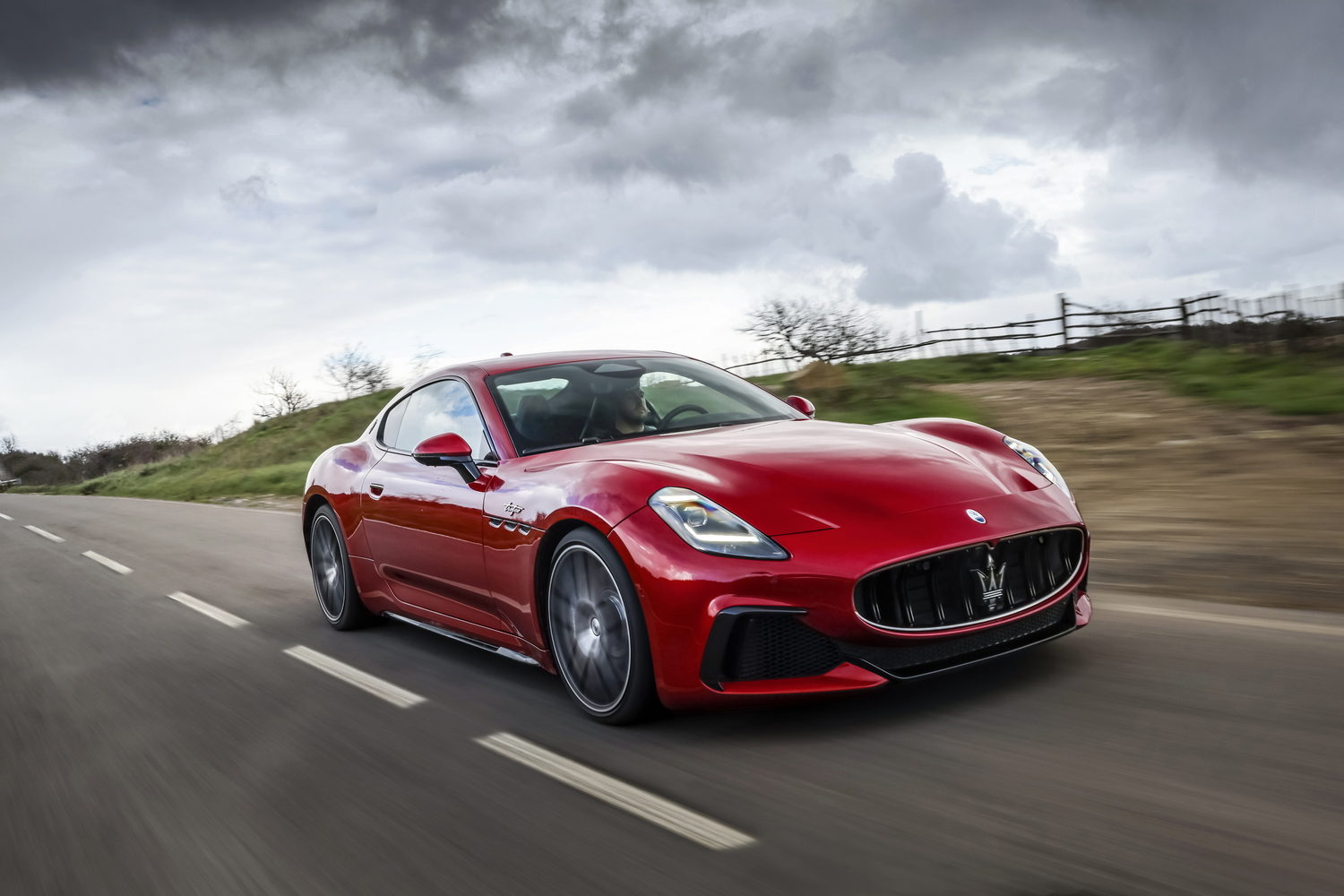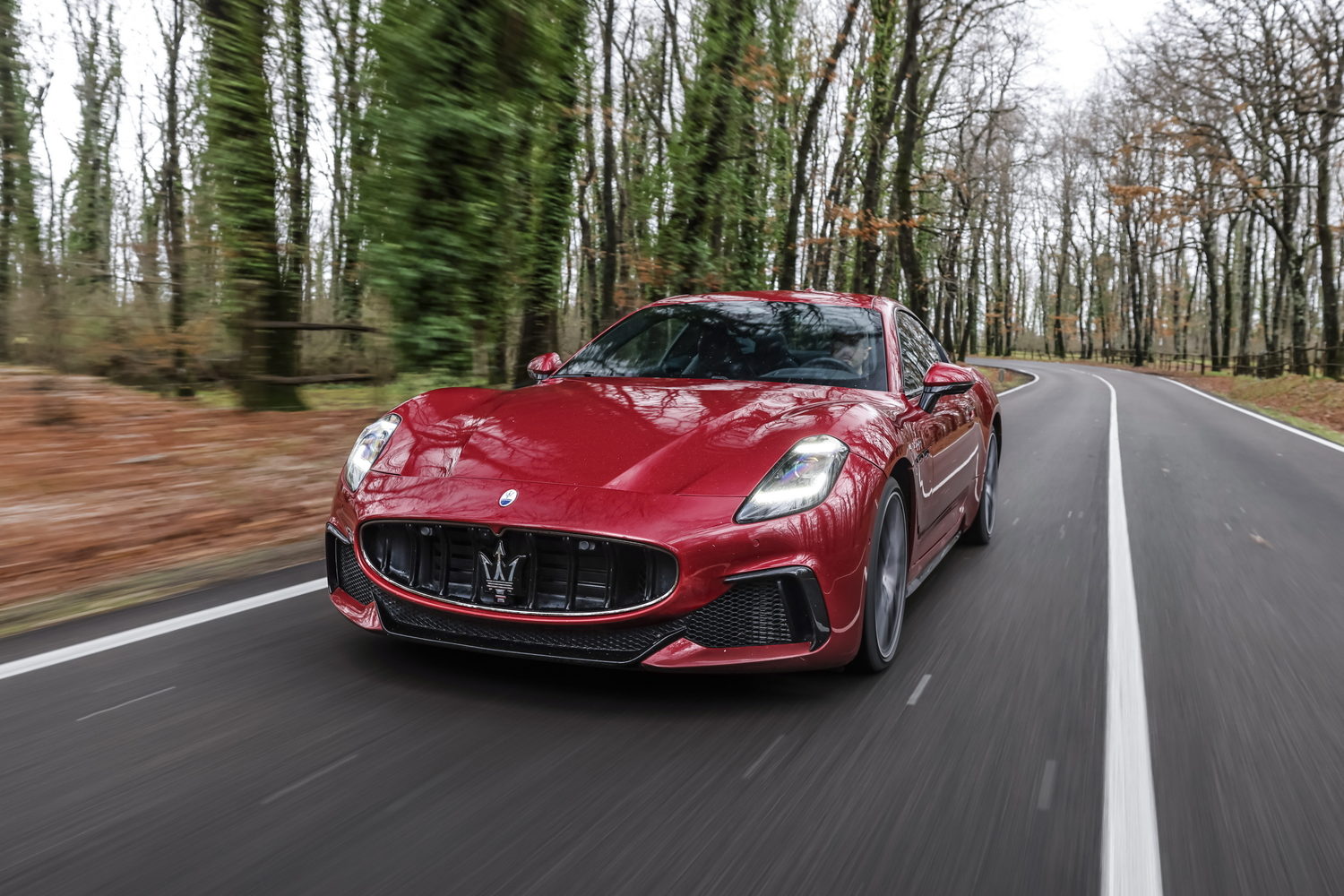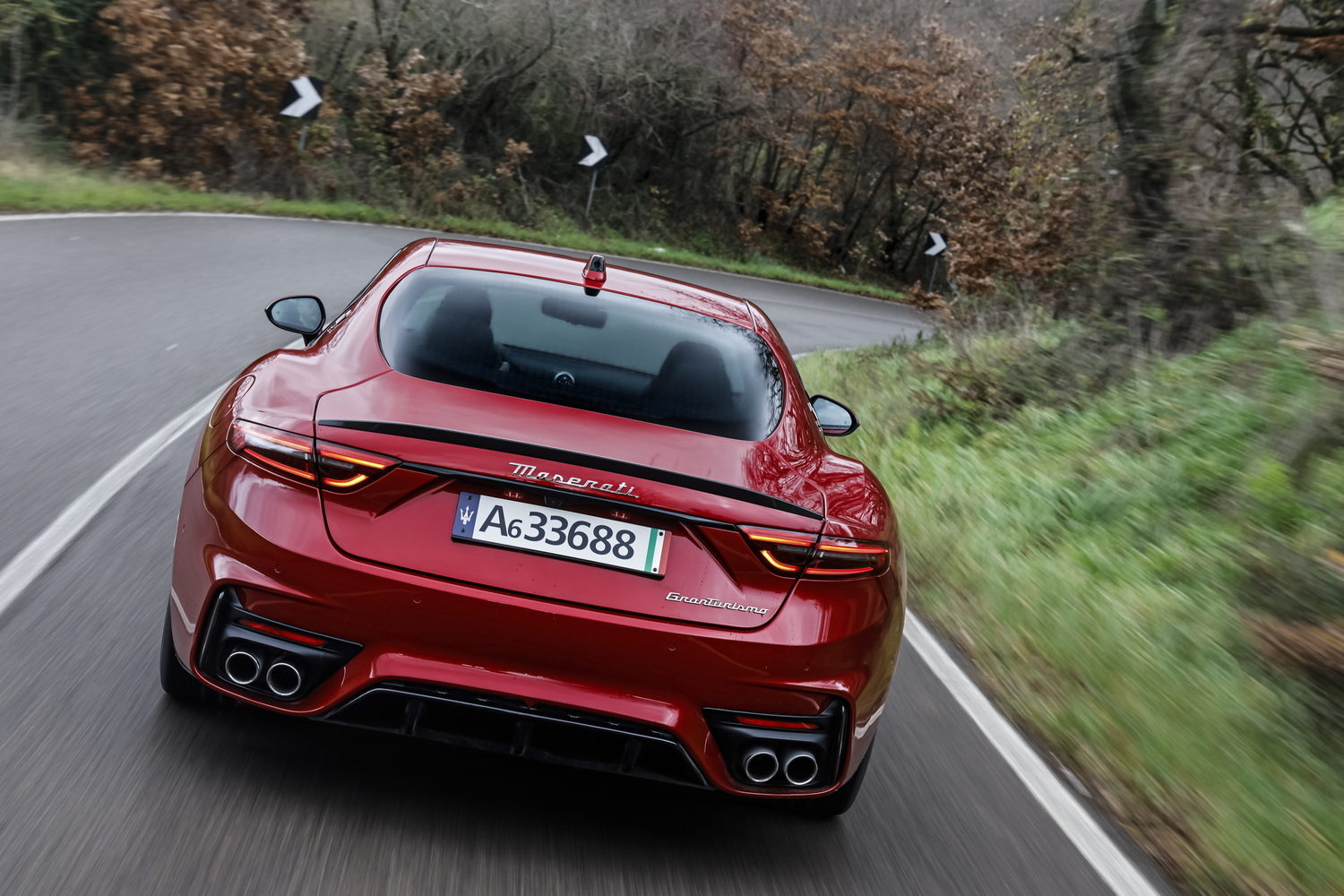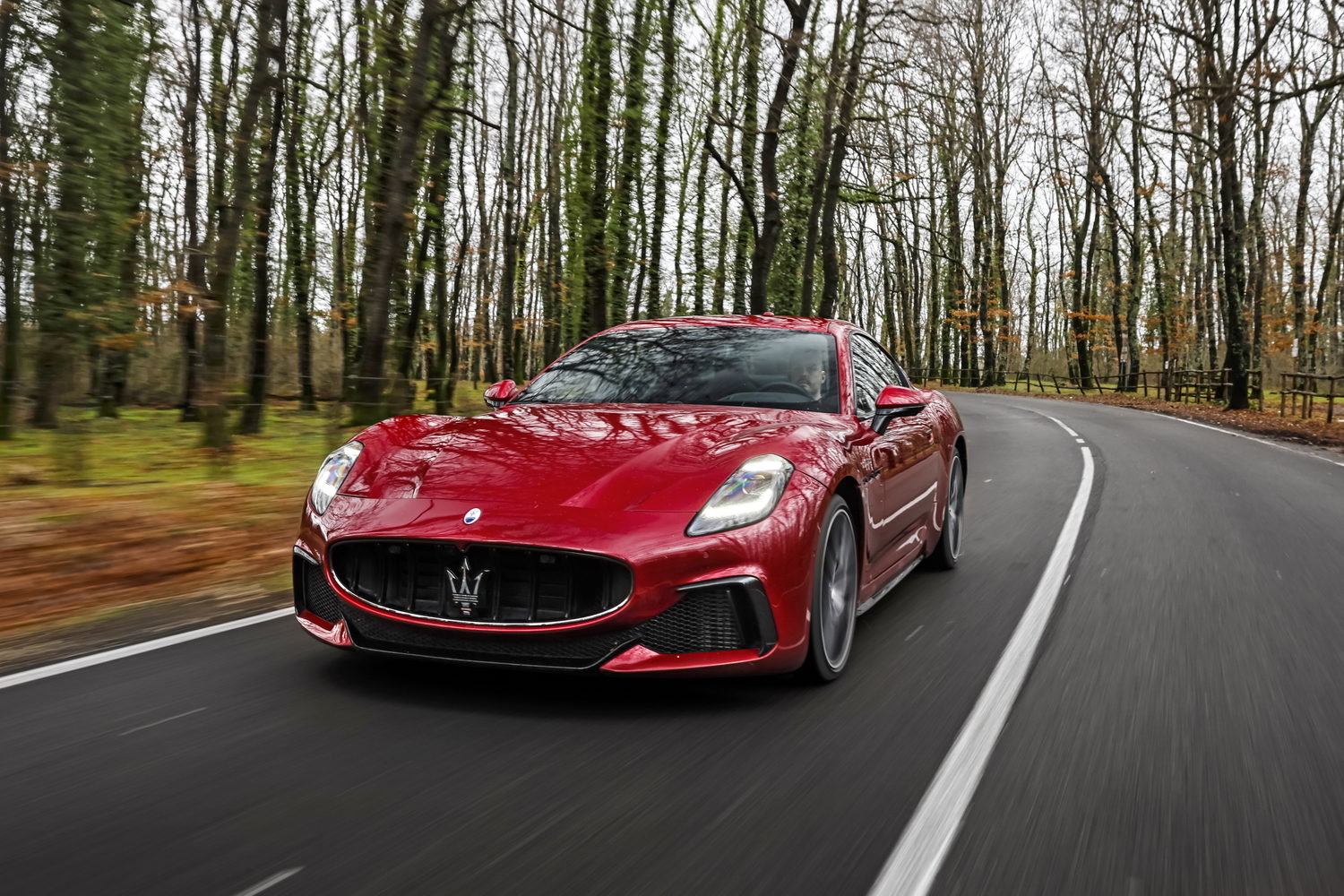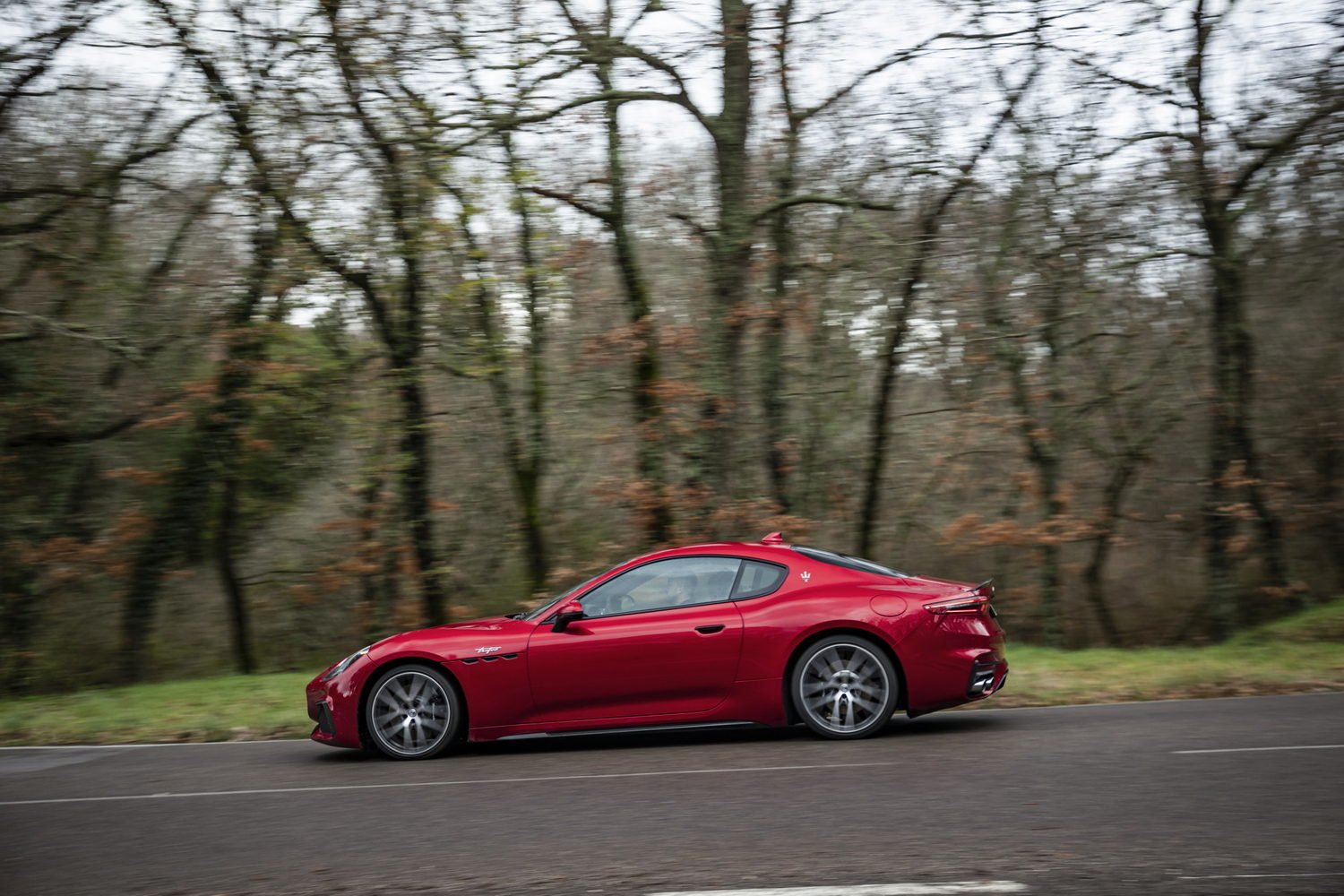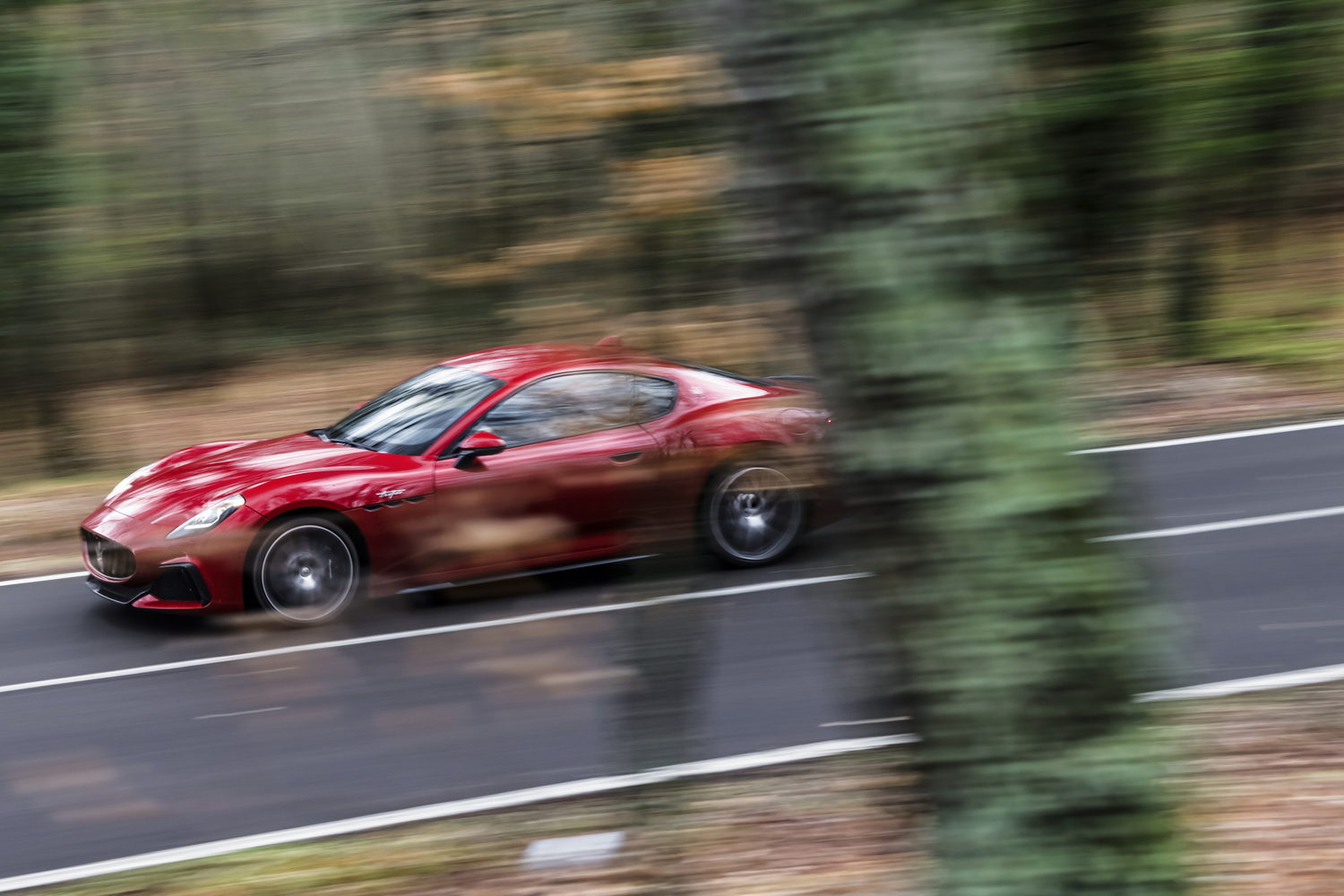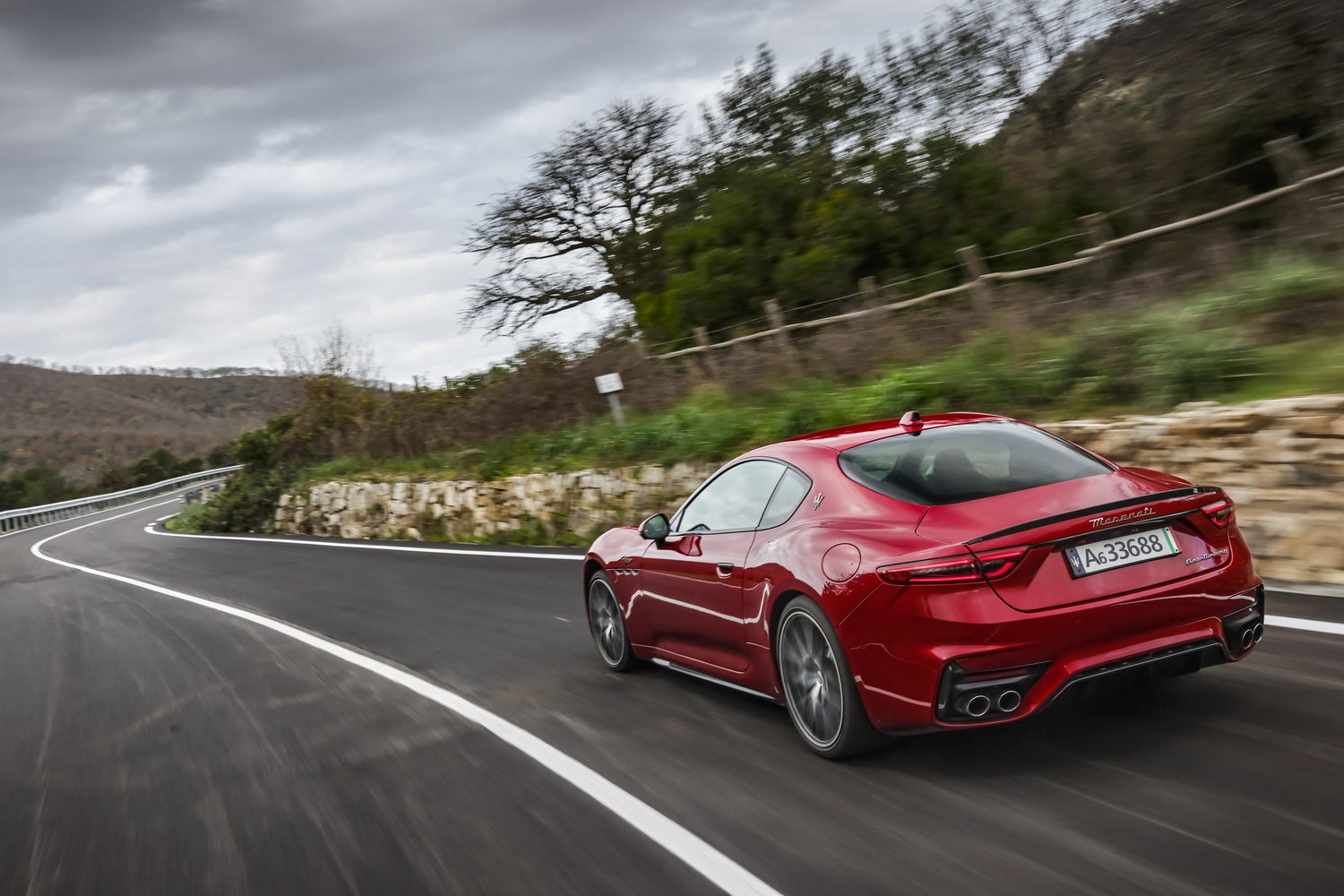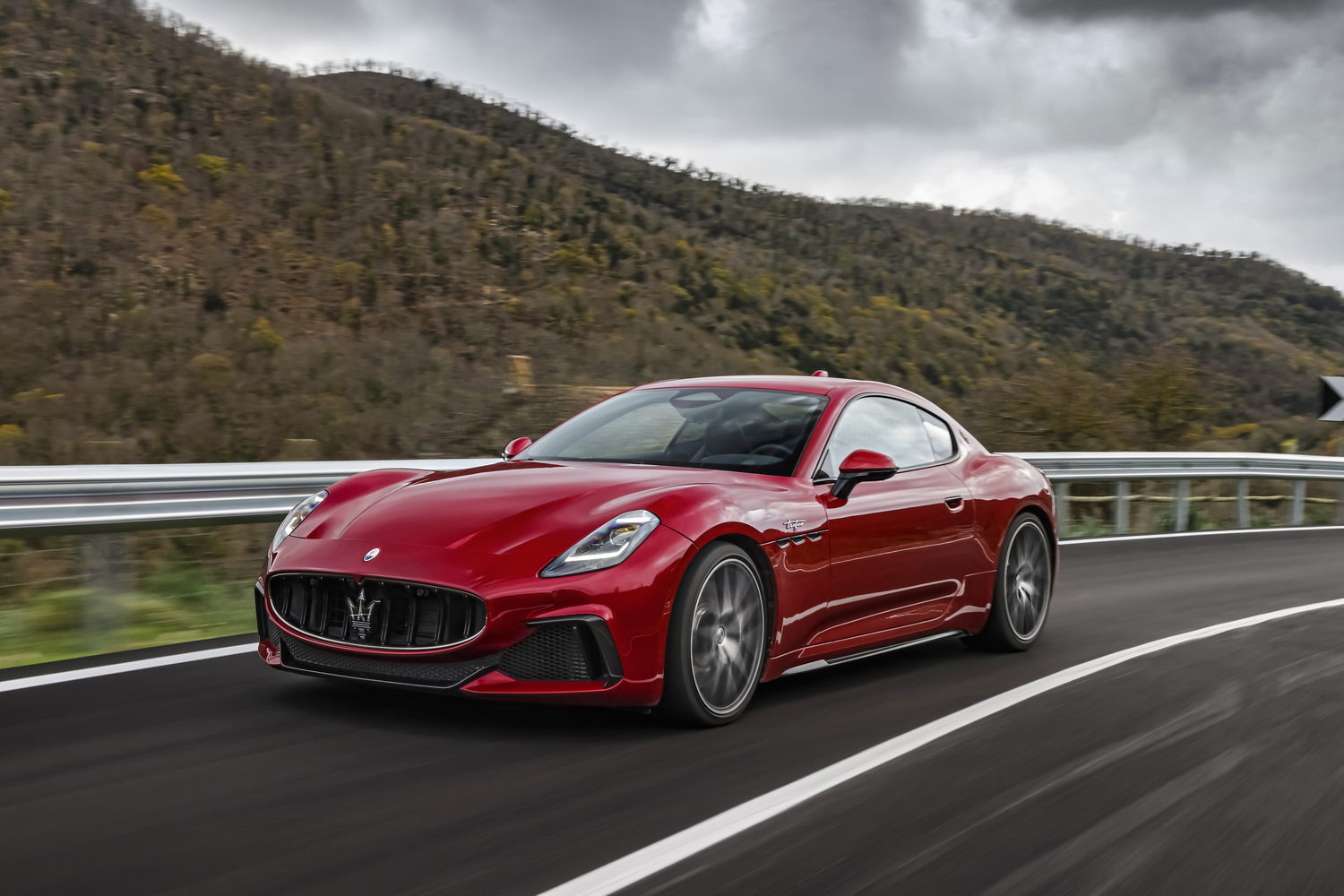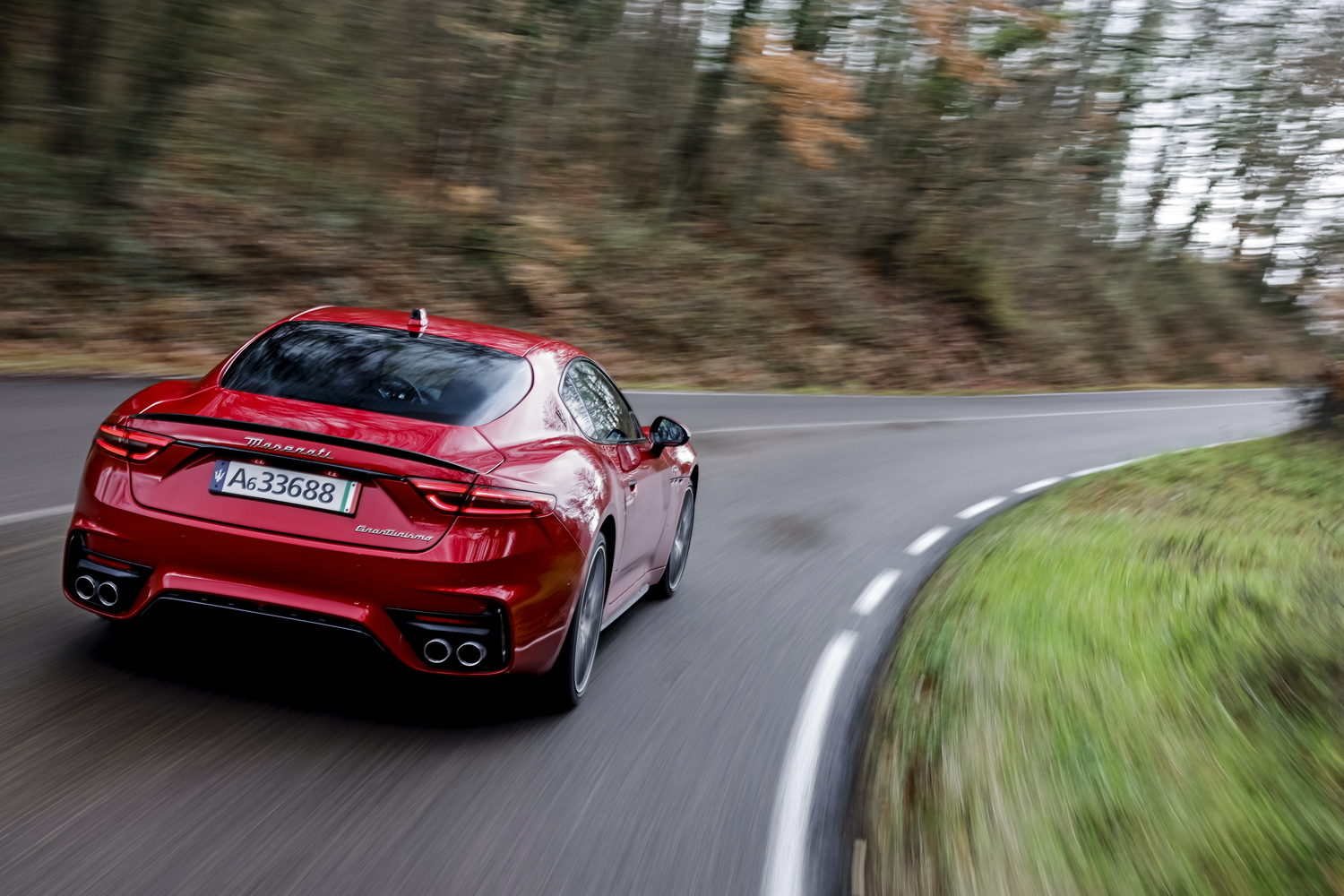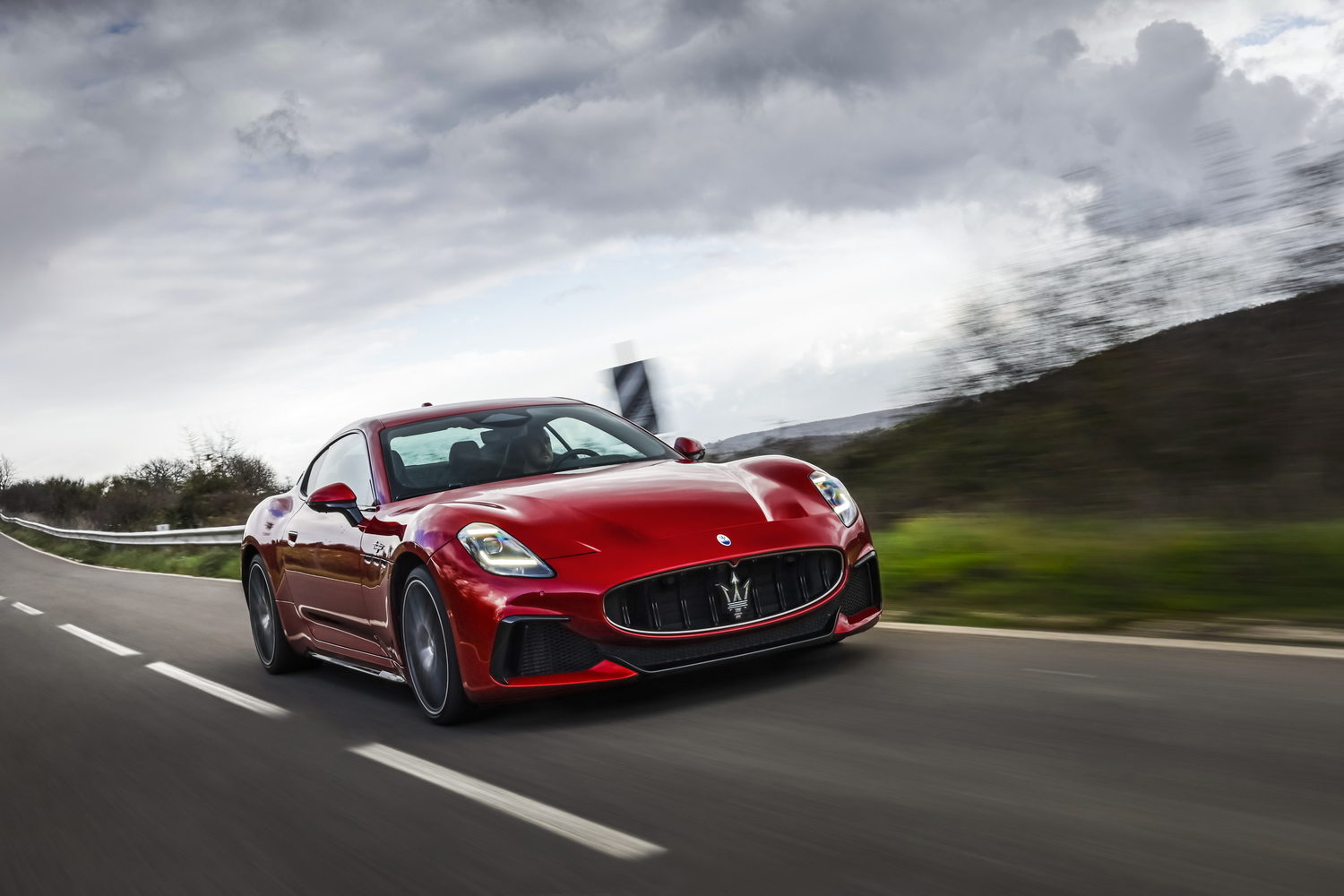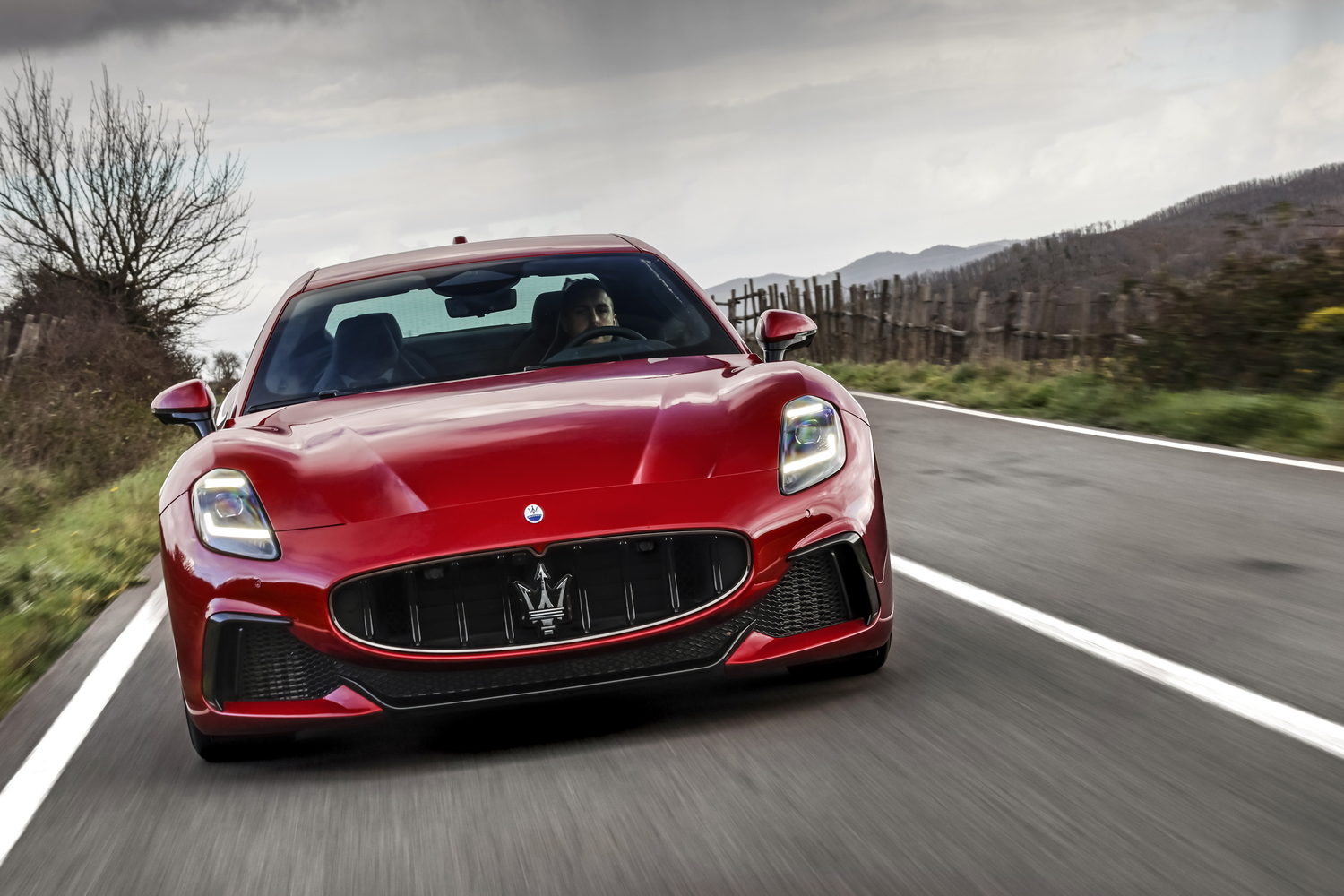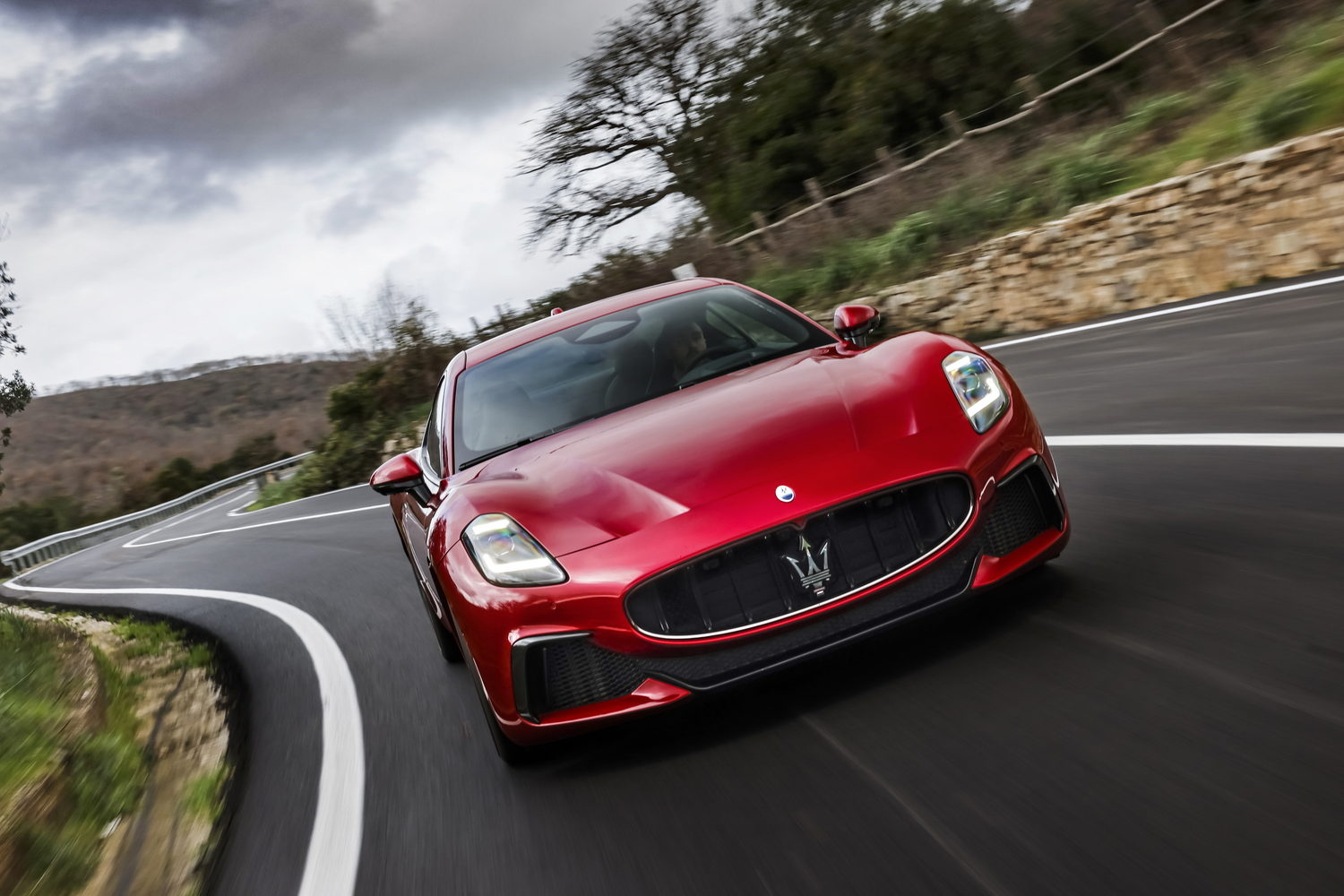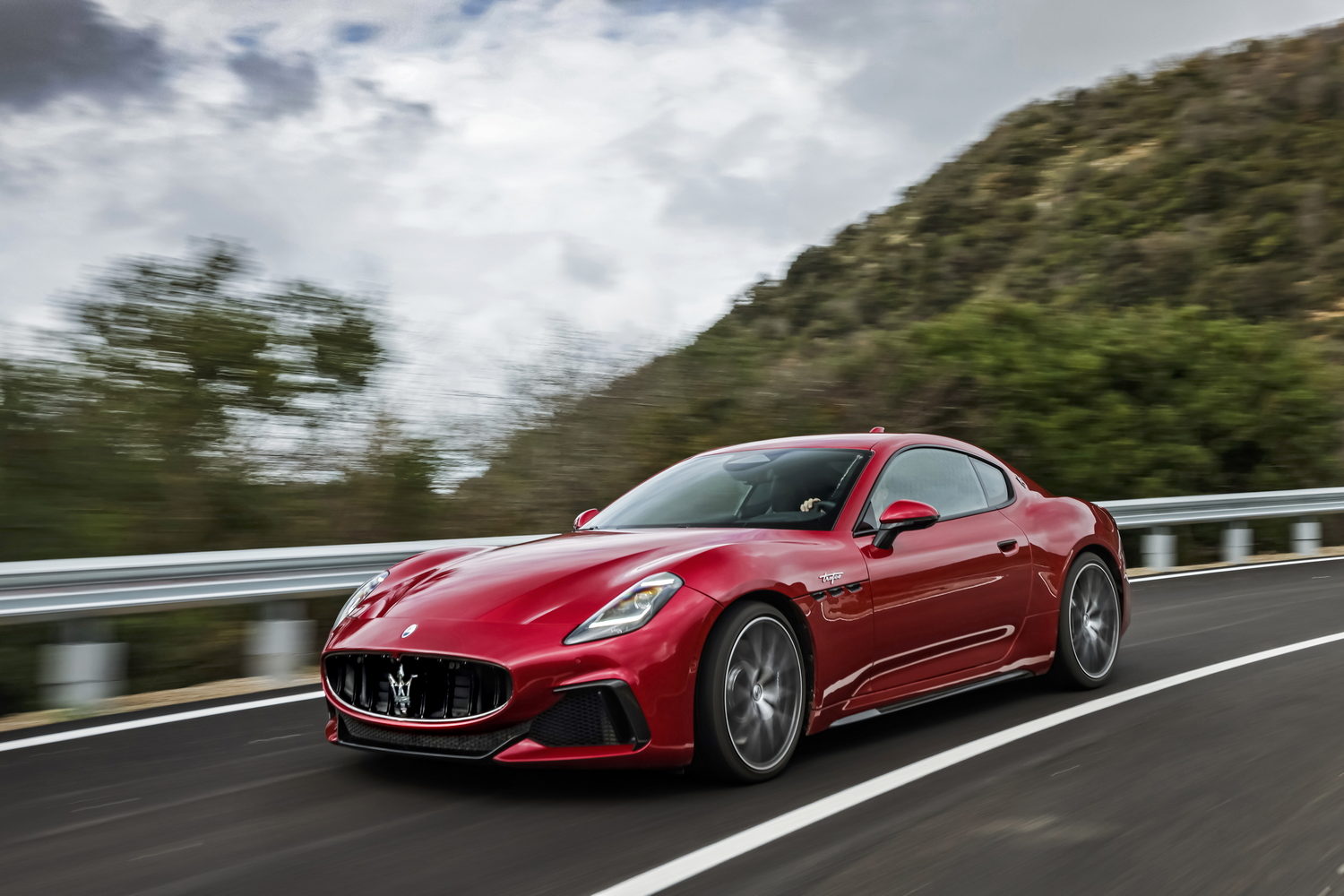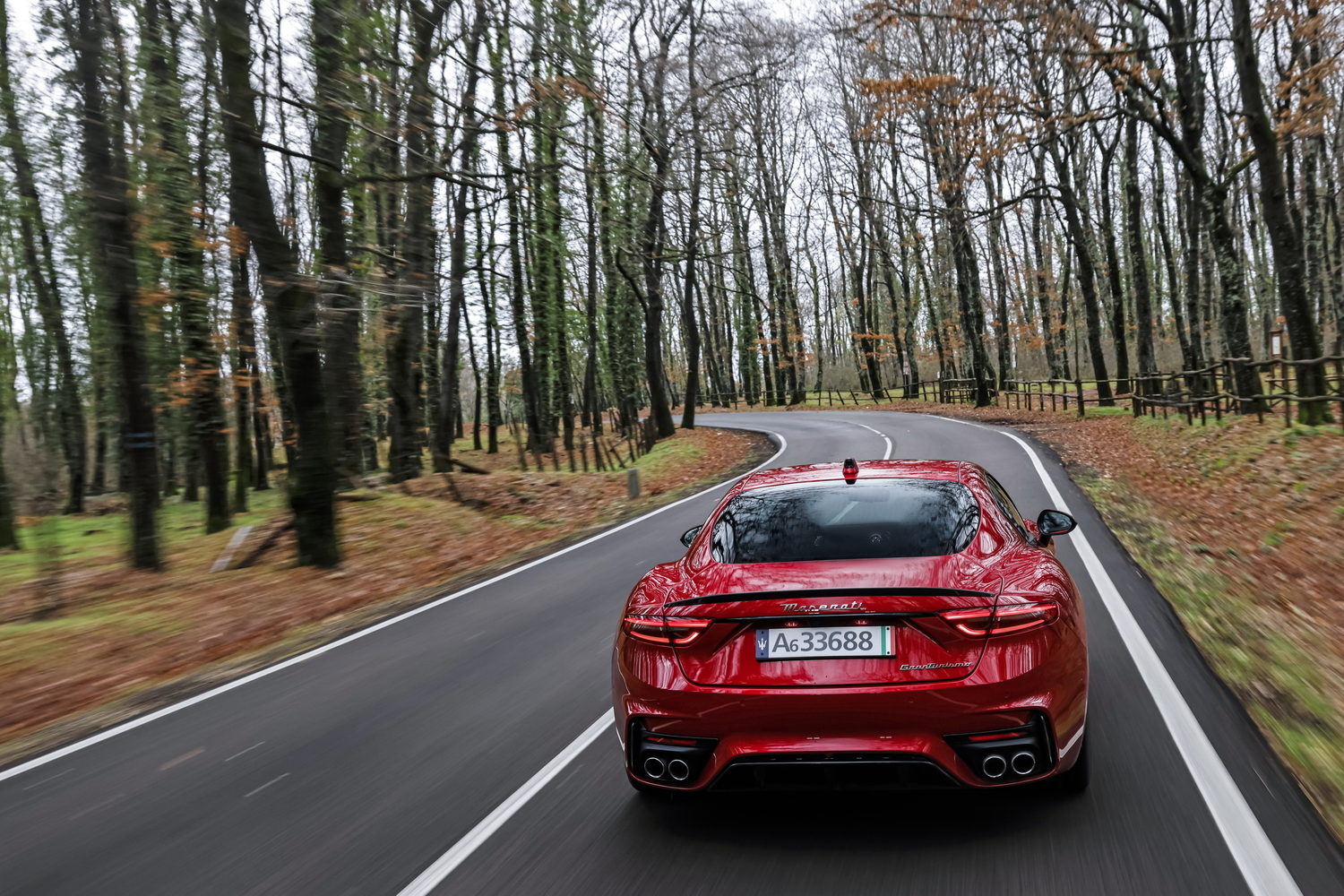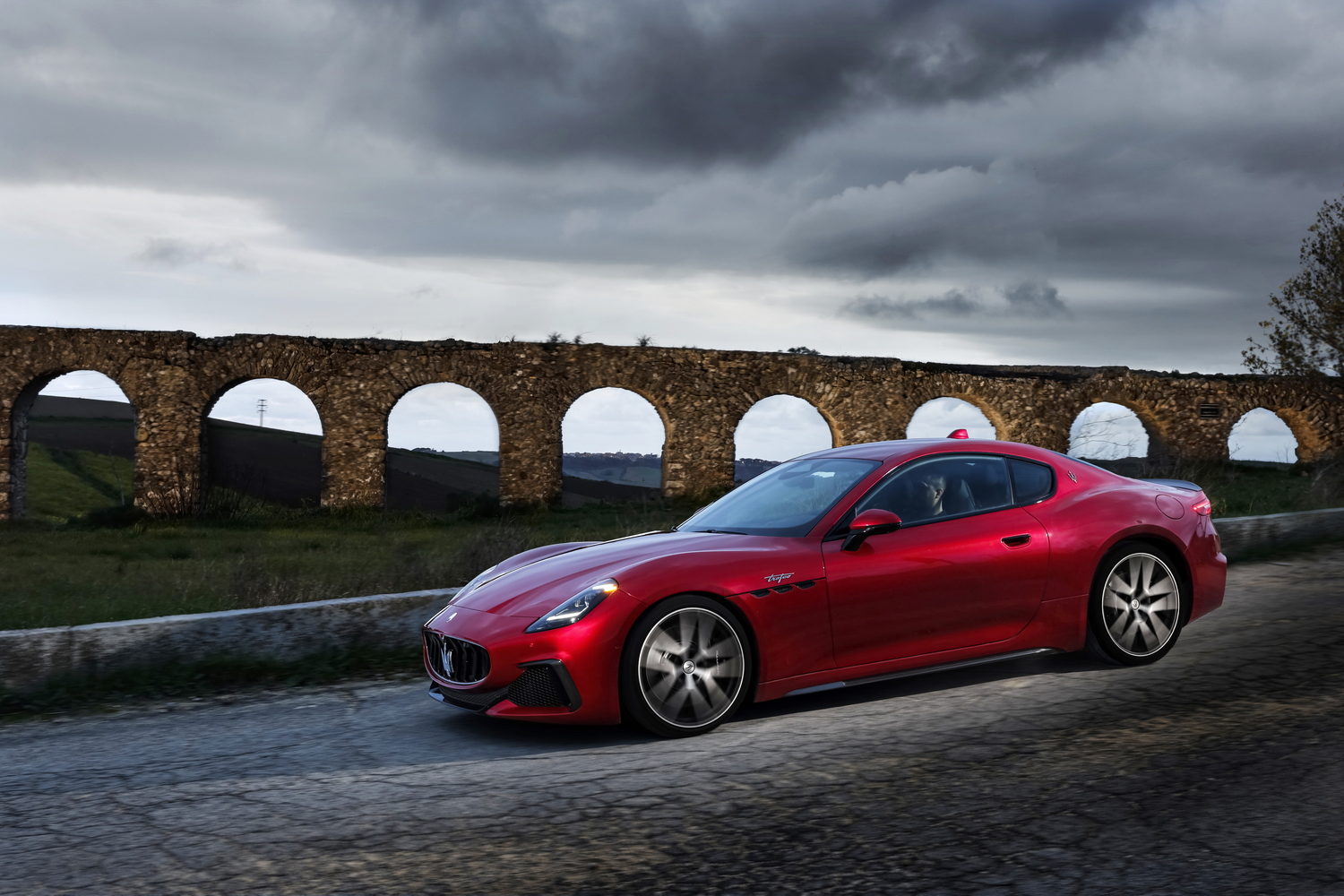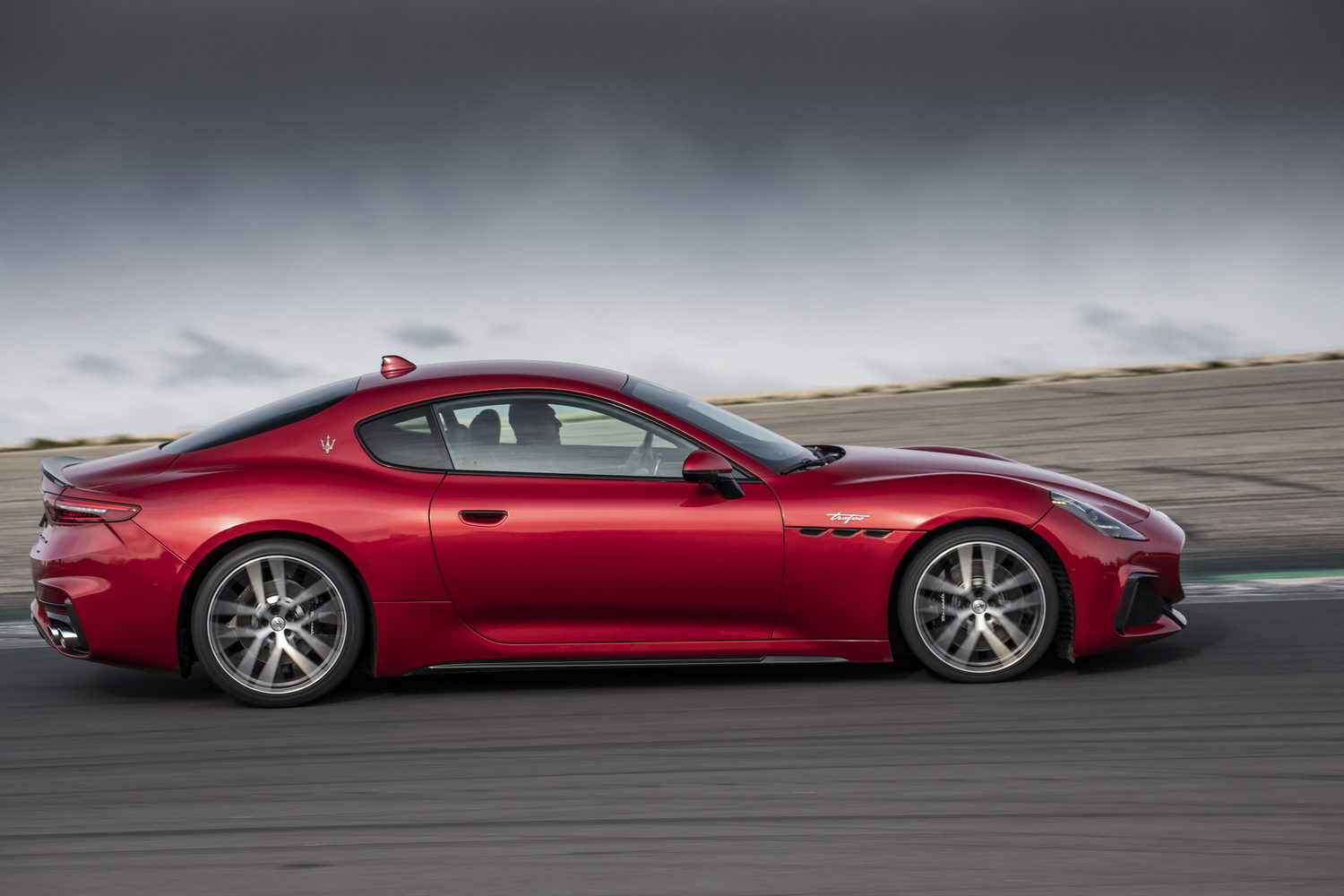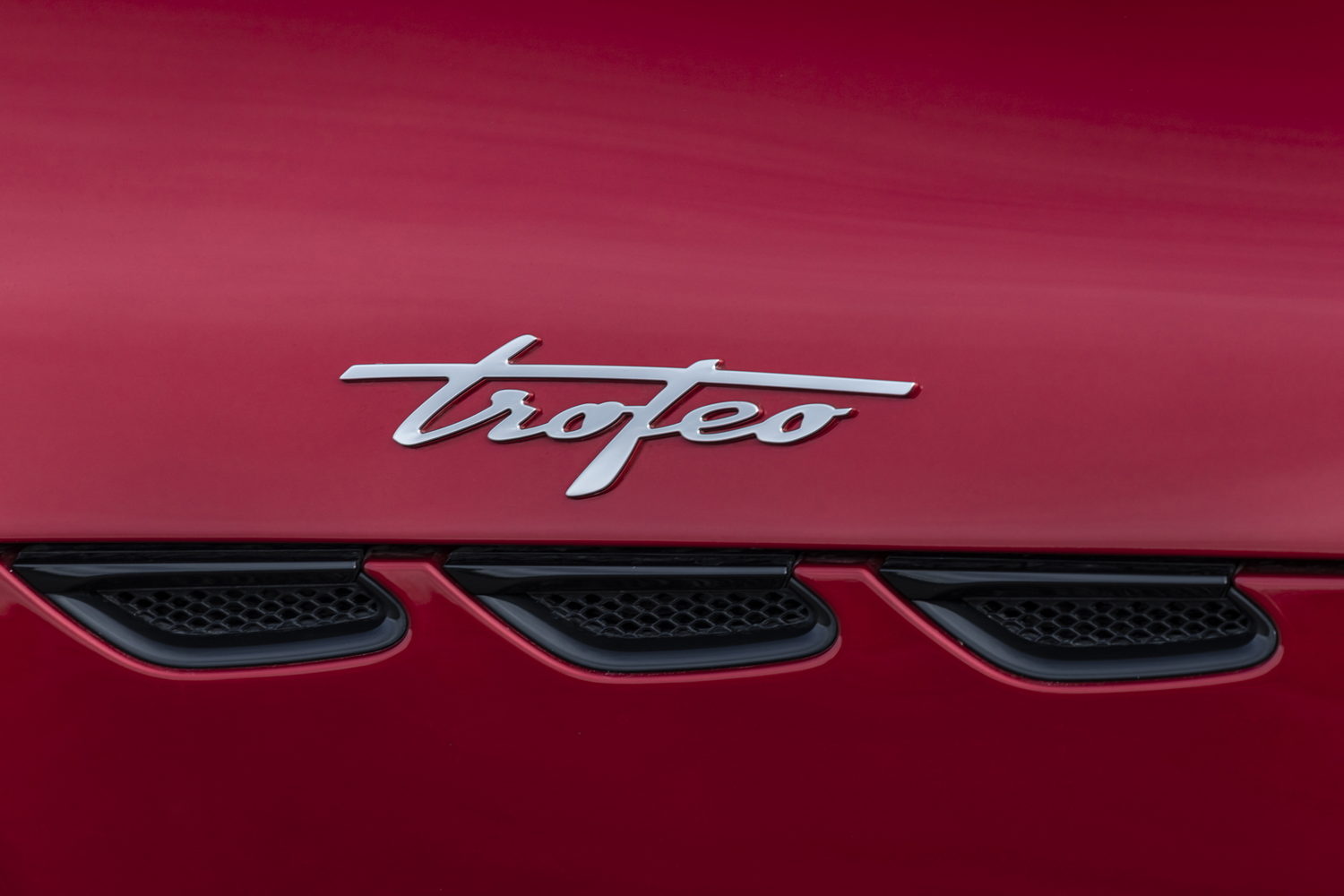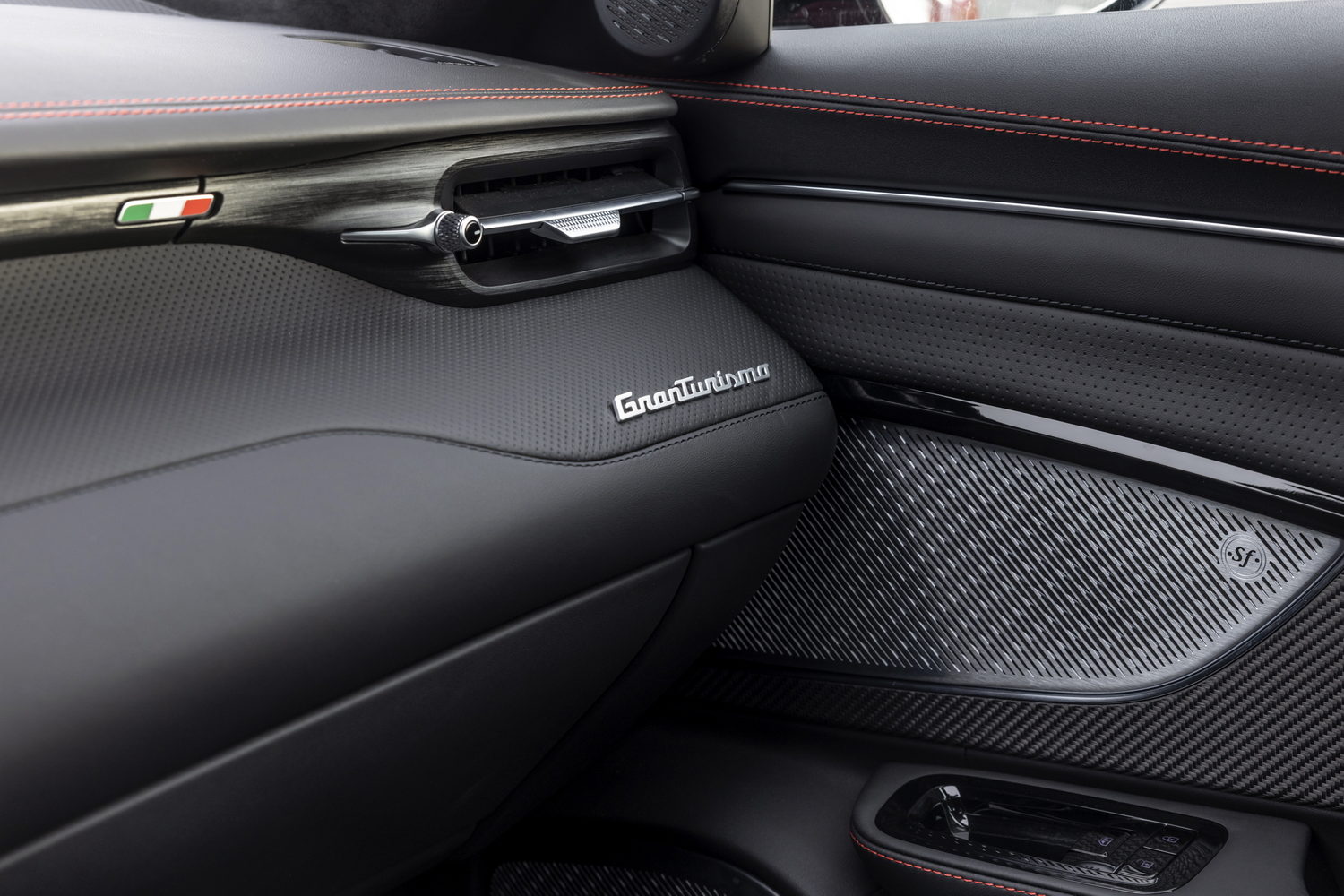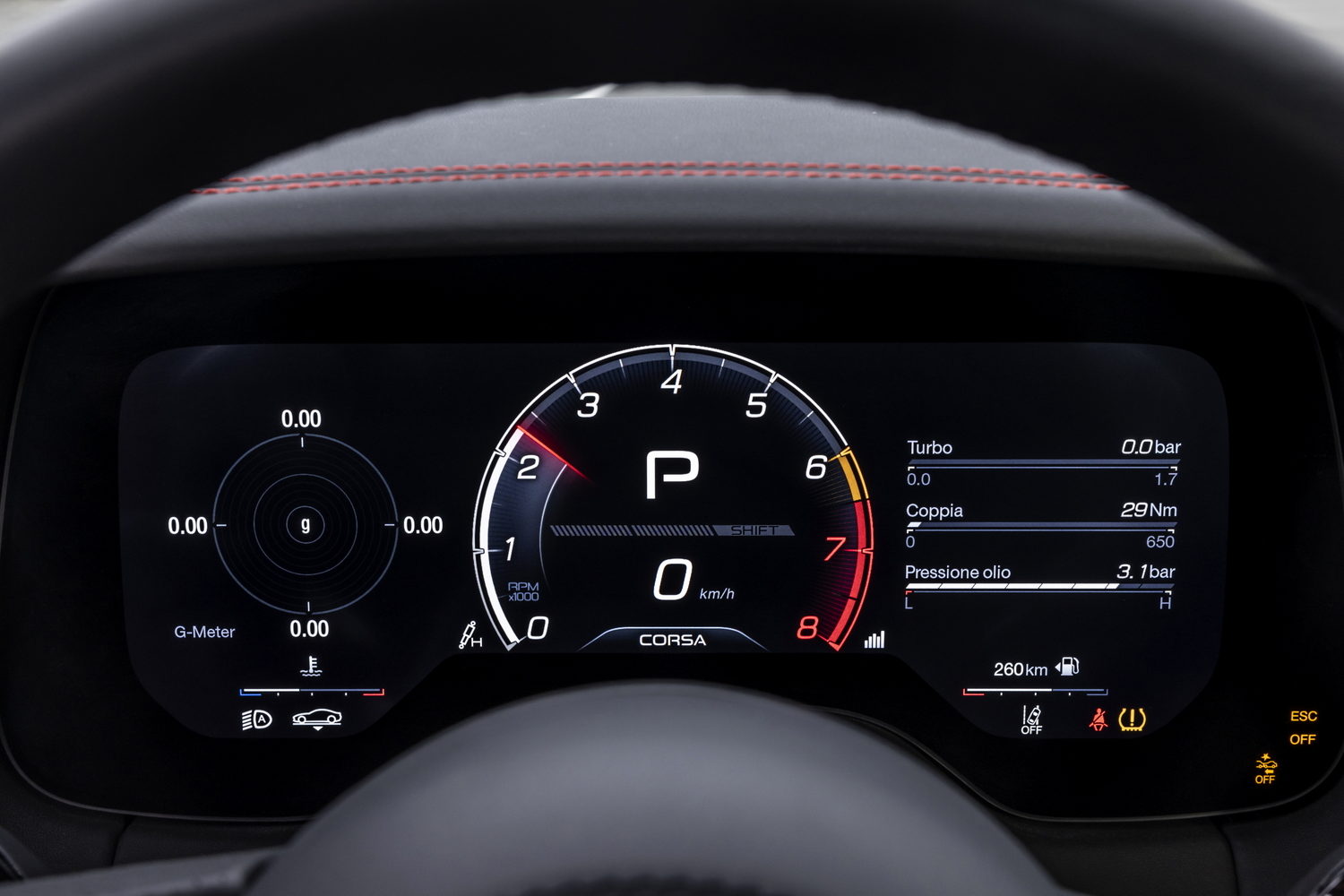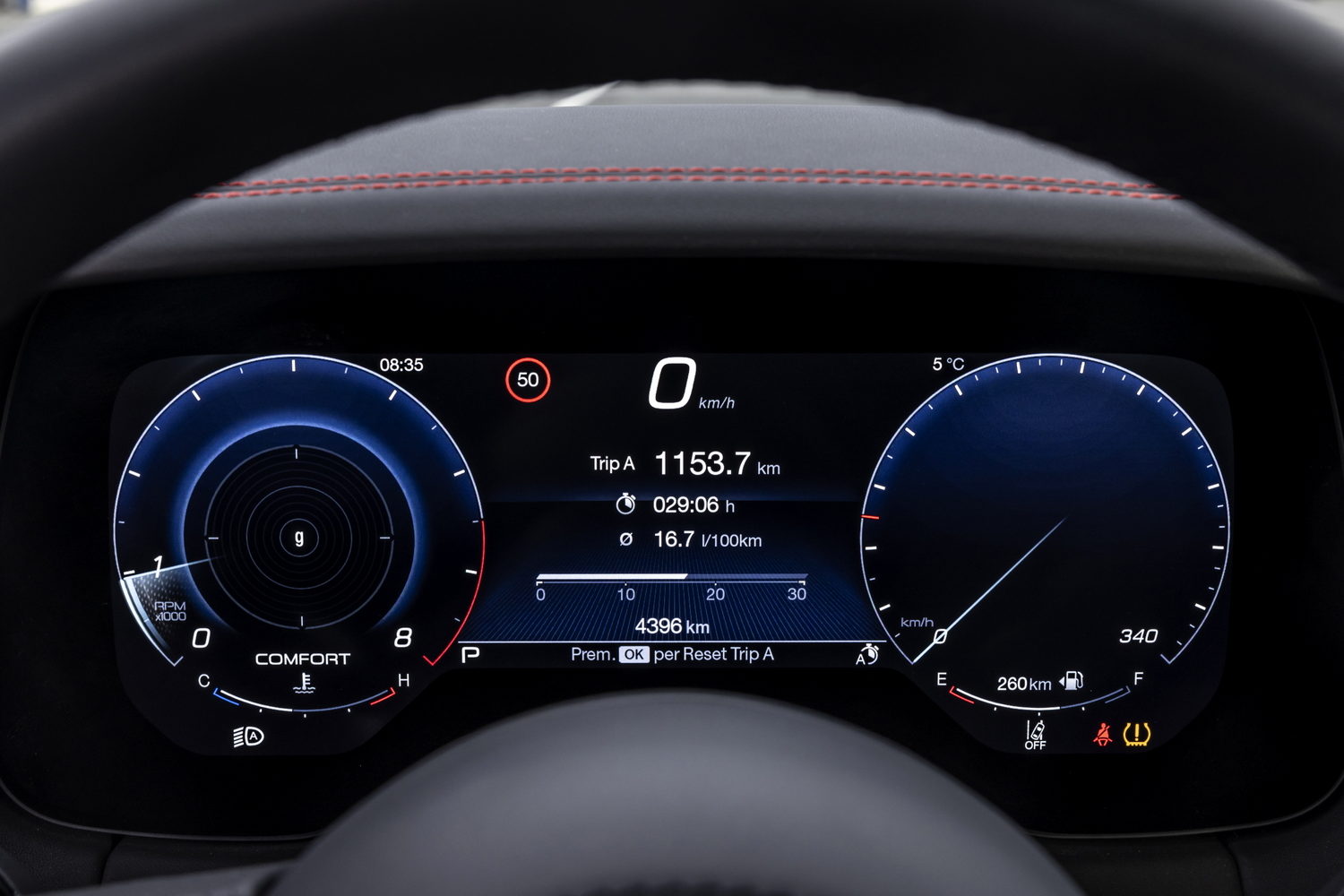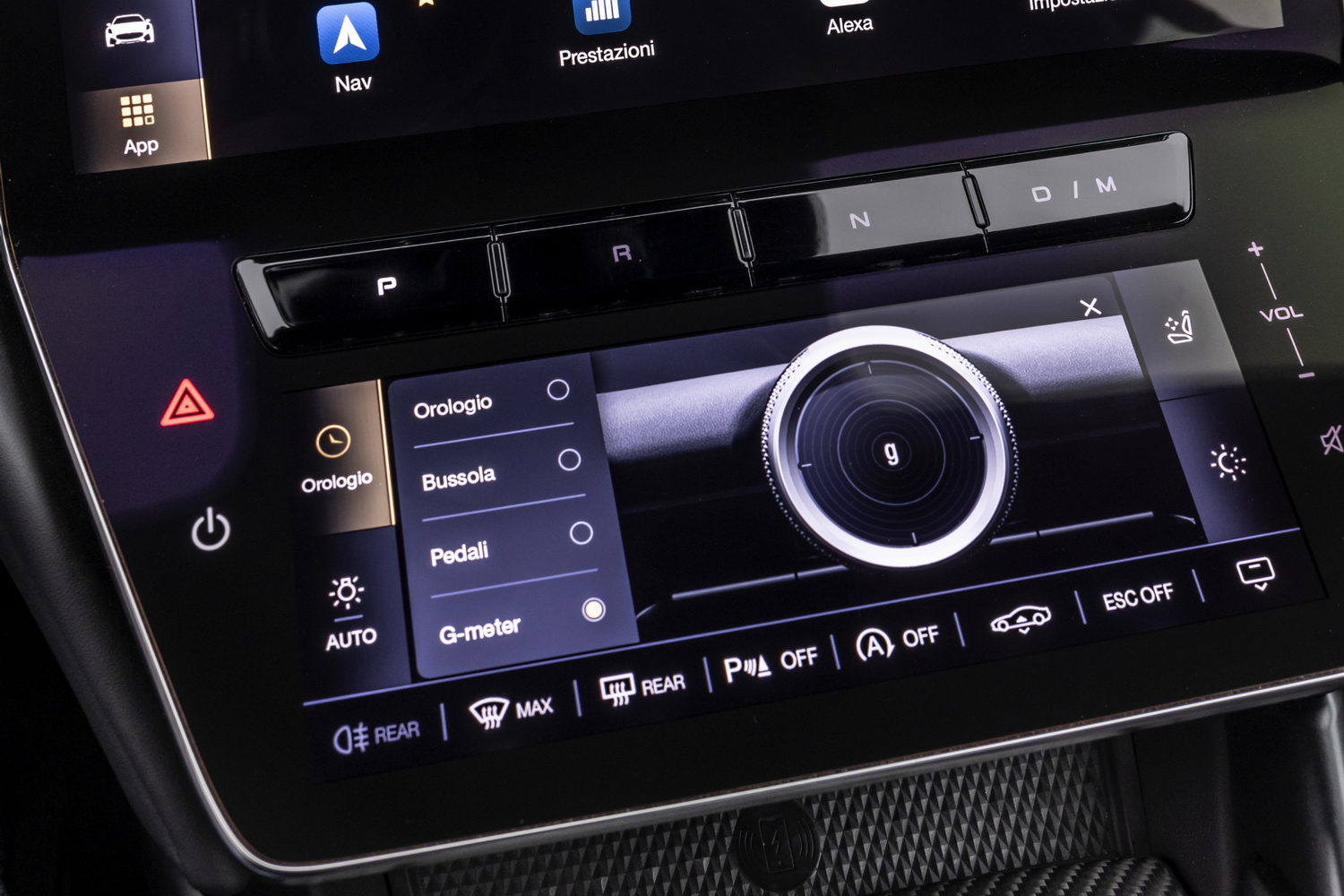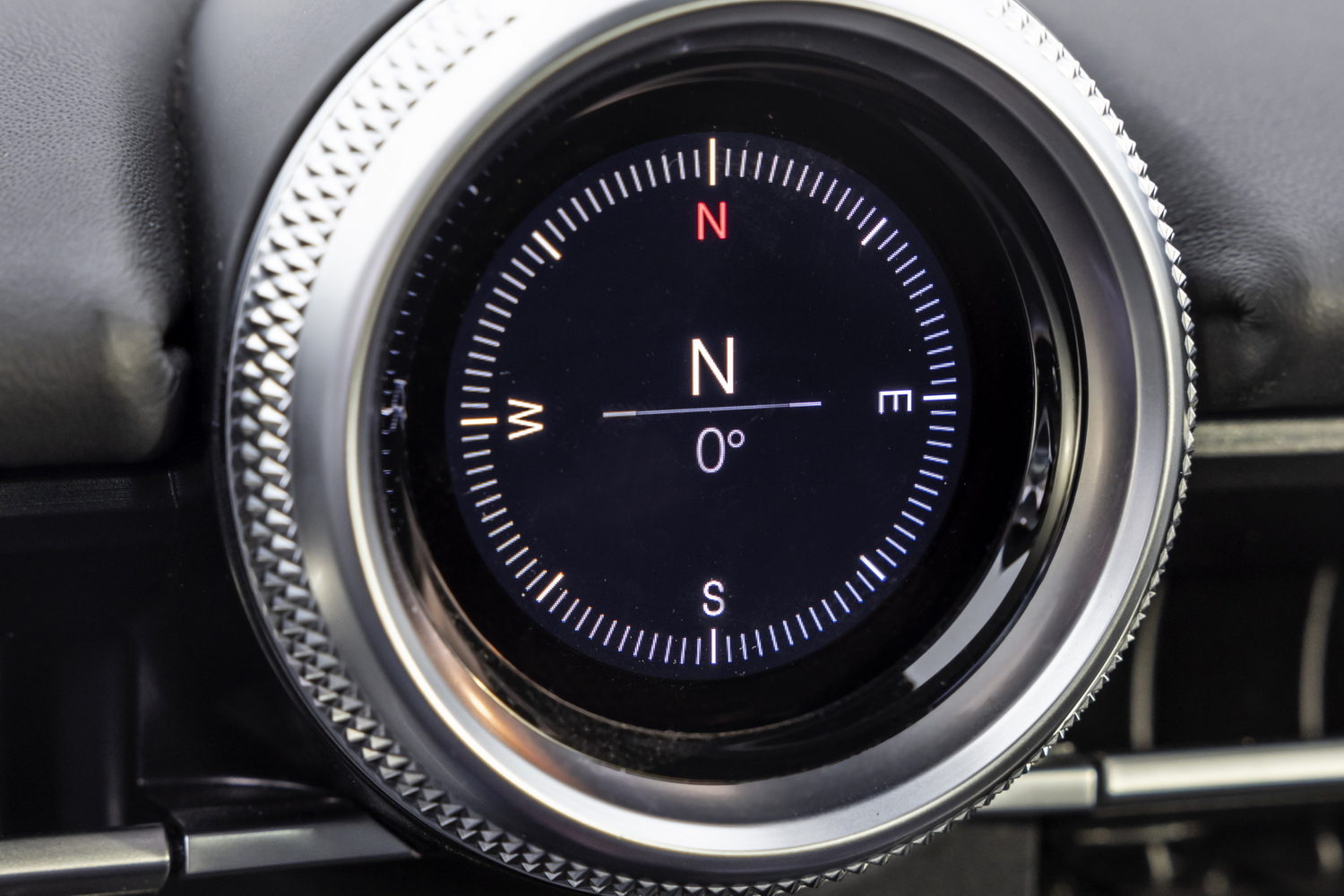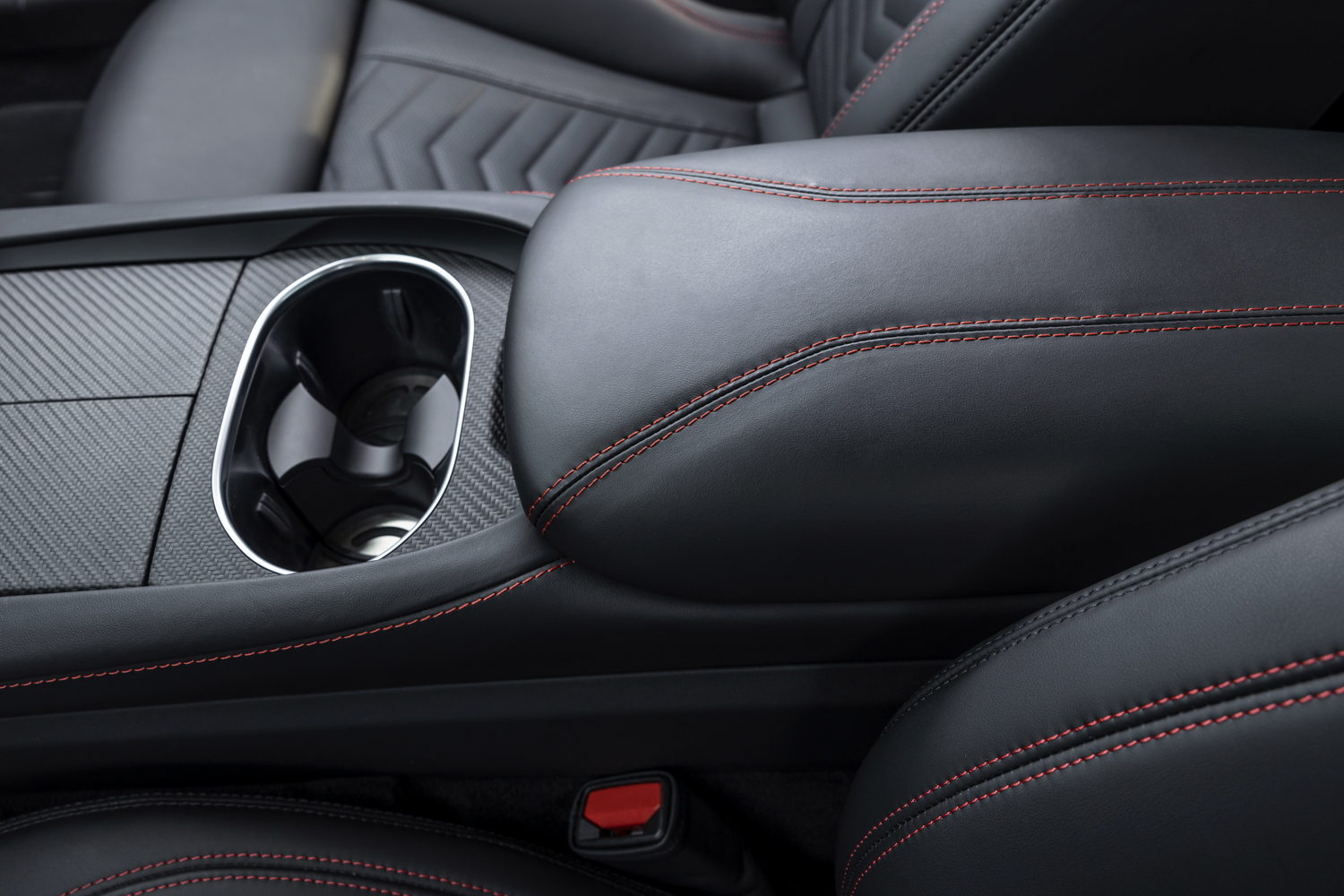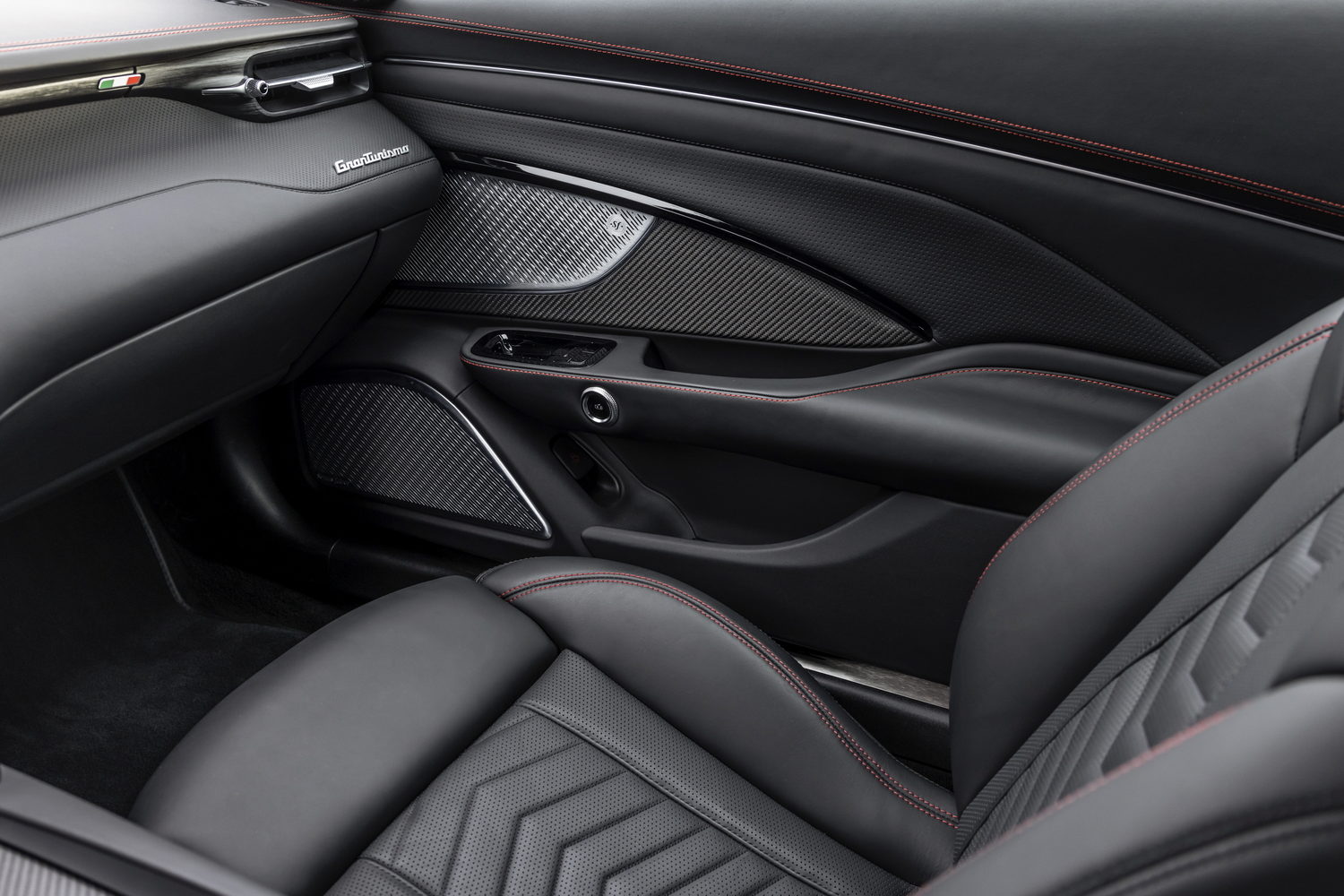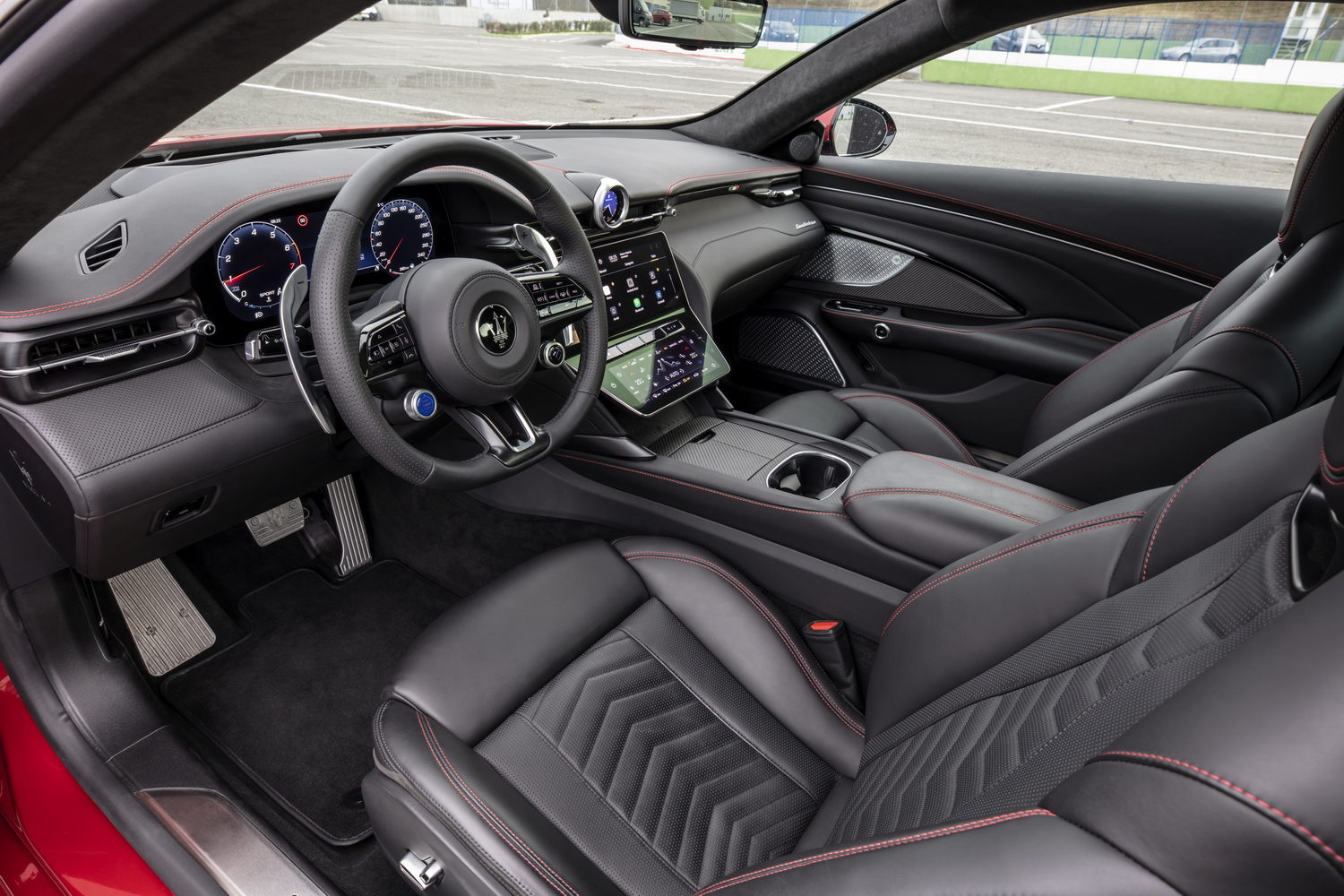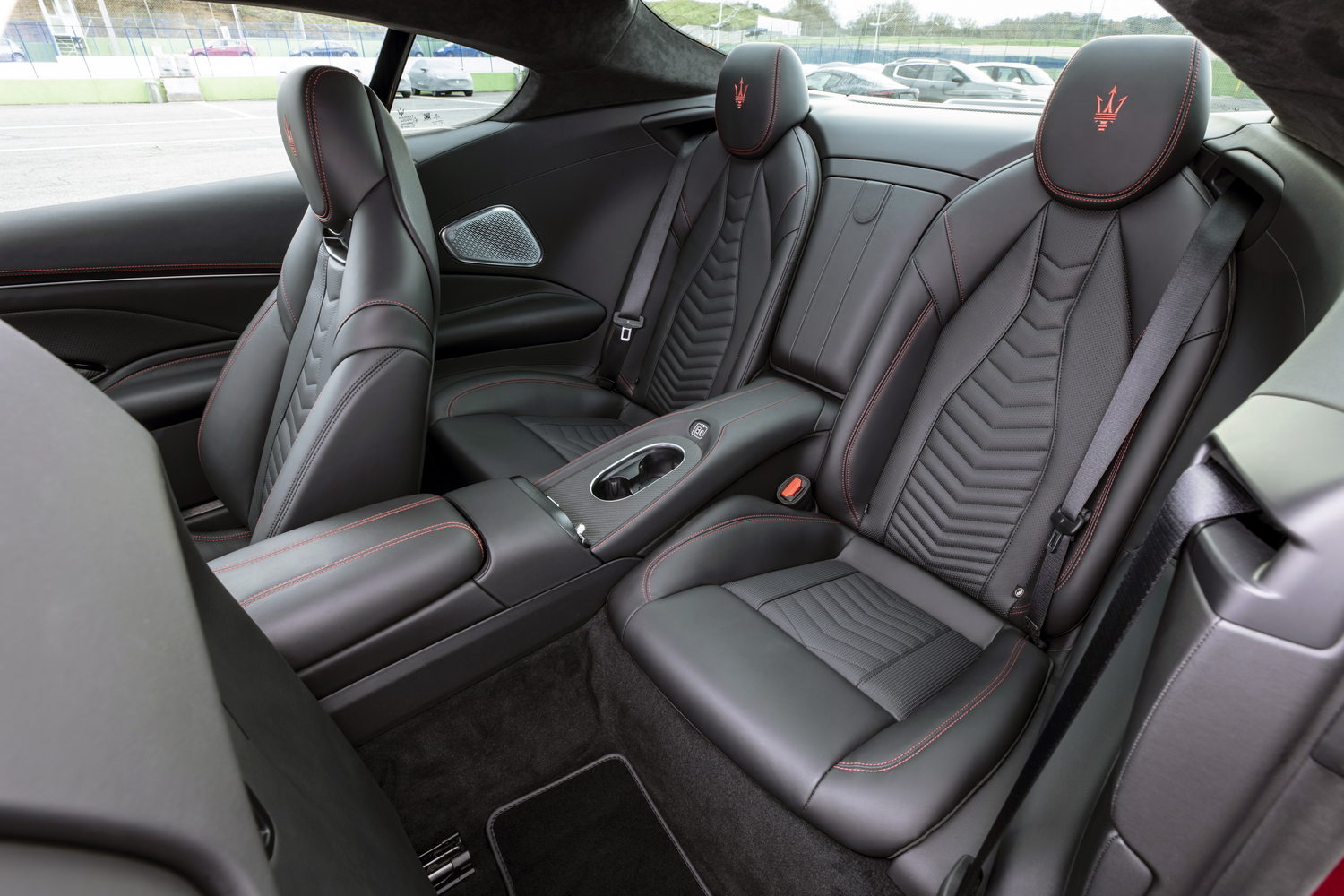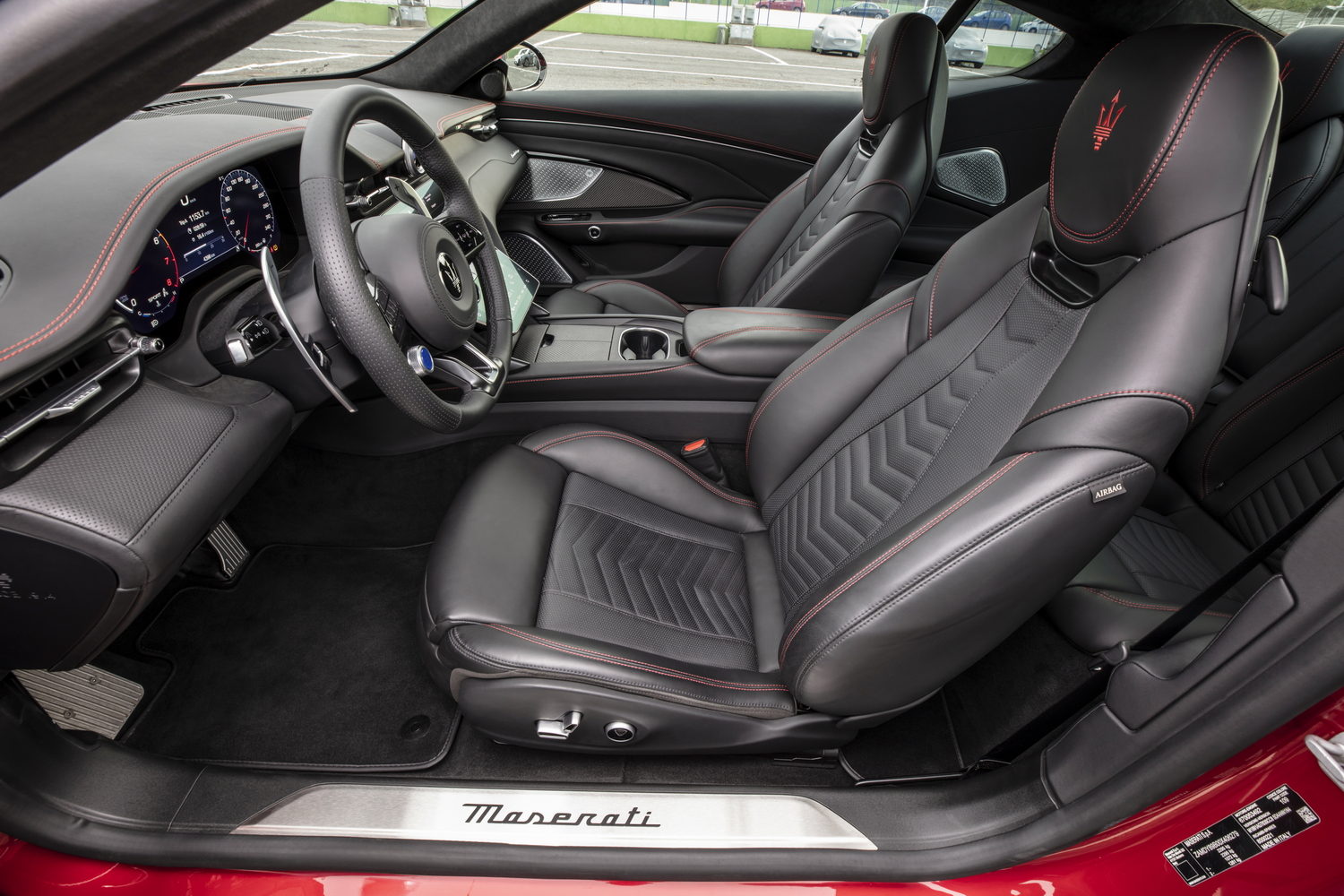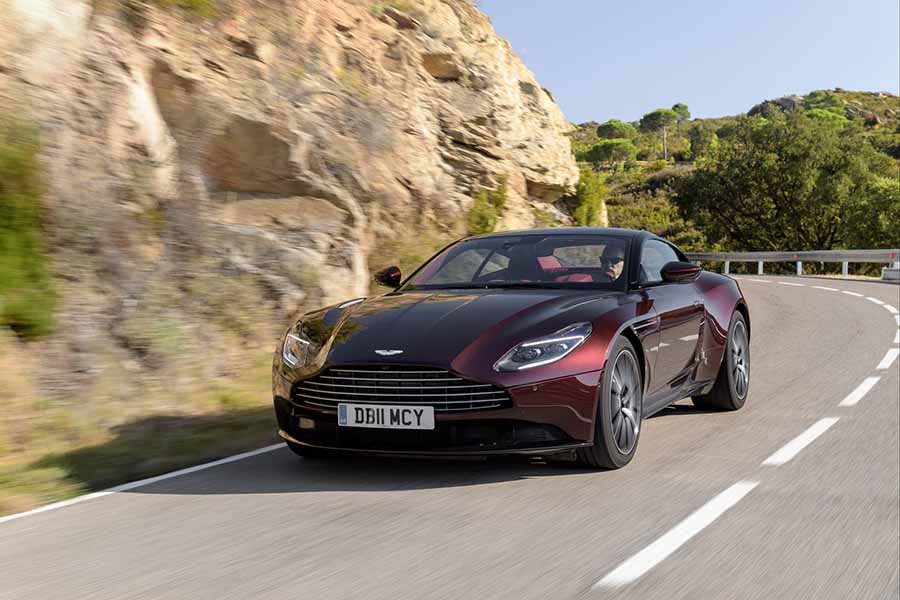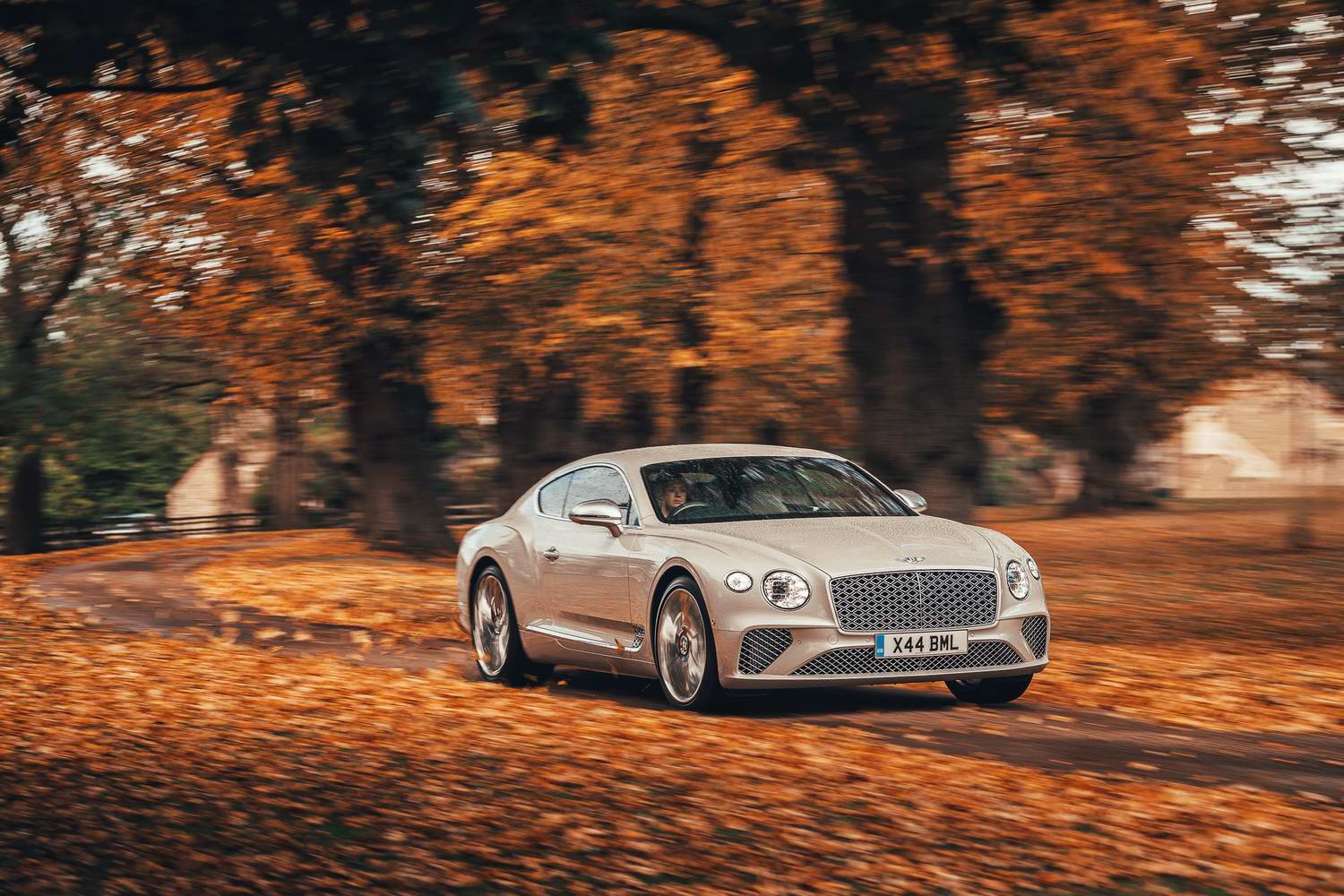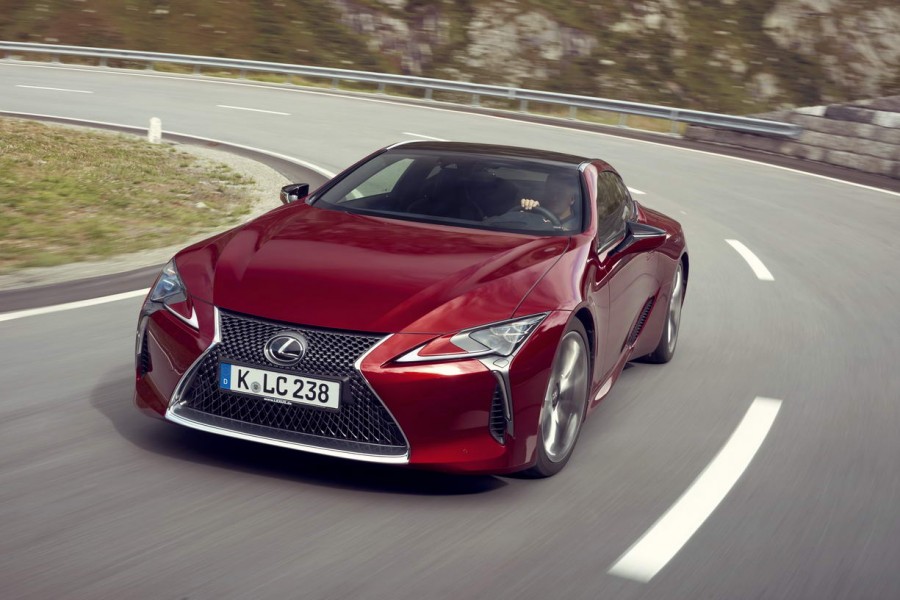The old Maserati GranTurismo was beautiful and beguiling, but it was hardly modern, so when it was finally killed off it came as no surprise. Now, though, the GranTurismo is back in business, sitting on an all-new platform and powered by an all-new engine. Yes, it may have lost two cylinders in comparison to its predecessor, but it uses the same awesome 3.0-litre engine found in the Maserati MC20 supercar, so power is hardly in short supply. But can the new GranTurismo take Maserati's flagship grand tourer to new heights?
In the metal
If you're struggling to spot the differences between the new and old GranTurismos, you most certainly are not alone. The two cars look remarkably similar, and that's good news for Maserati's newcomer. Although it's slightly longer and wider than before, it shares the same low snout and long bonnet, as well as the pronounced haunches and Maserati's trademarks, including the three vents on the front wings and the logo on the rear pillar. Perhaps the new car is a little less muscular, but it's every bit as beautiful to our eyes. Grand tourers are supposed to be gorgeous in our book, and this one certainly ticks that box.
But while the external design may not have changed dramatically, the interior is a massive improvement on what went before. The old GranTurismo was in production for more than a decade, and by the time it was finally killed off in 2019, it was starting to feel old. This new model, however, feels decidedly modern, with a fresh emphasis on technology that sits alongside new twists on Maserati's traditions.
As a result, you still find wood trim waiting in the new GranTurismo, and you will still get beautifully crafted leather seats and a central clock on the sculpted dashboard. But instead of a real analogue clock face, the GranTurismo has a digital screen, which sits alongside the two central touchscreens lifted from the Grecale SUV. Separated by a row of (occasionally frustrating) gear selection buttons the two central screens control pretty much everything, rendering most of the old car's buttons redundant.
The lower screen takes care of the climate control and some other features, including the lift kit that raises the car up and allows it to traverse speed bumps and kerbs more easily. It isn't the best solution for such systems - we'd rather use less distracting physical switchgear - but it works reasonably well all things considered, and it's certainly an improvement on the touchscreen in the old GranTurismo.
As is the upper screen, which uses much more modern technology. It's far from perfect, blighted with some fiddly menus and occasional lag, but it's better than some of the old Maserati tech - both in terms of features and functionality.
We are a little sad to see the old analogue instruments go, however, with their classic blue faces and solid-looking needles. Instead, there's a digital instrument cluster lifted from - you guessed it - the Grecale. For the most part, it's a clear and easily configured display, but it doesn't have the wow factor of the Audi-derived system used in the Bentley Continental GT. It does the job, though, and it's ably assisted by a head-up display that projects key information onto the windscreen. That's something of a mixed blessing, because the low driving position means the display can cover details on the road ahead at times, but it's generally clear and detailed.
Happily, the GranTurismo seems to have inherited slightly better build quality than the Grecale from which it borrows so many other features. Perhaps it doesn't help that all the Grecales we've driven have been pre-production cars, but the GranTurismo feels noticeably more solid, with smart materials pretty much everywhere and a sense that everything is well stuck together. It's a shame that the glossy plastic buttons - and there are lots of them - feel a bit cheap for such an expensive car, although they don't feel quite as loose as they did in the Grecale.
Practicality is also more competitive than before, with a bigger boot being the headline improvement. At 310 litres, it's hardly massive, but it should be more than enough for most people's needs. Beware, though, that the Folgore versions have a smaller (270-litre) luggage bay thanks to the location of the electric motors under the boot floor. Both cars, however, come with a modicum of rear space. The two back seats aren't especially comfortable for taller adults, but most will cope on a short hop. That said, the GranTurismo is best used as a two-seater, providing ample room and comfort for front-seat occupants while also offering the chance to turn the back seats into extra luggage space.
Driving it
Whereas the old GranTurismo was available solely with a thumping great V8 petrol engine, the new model is somewhat less brash. Instead, you can have a V6 petrol engine with a choice of two power outputs, or you can have a three-motor battery-electric powertrain. All three options send their power to all four wheels, albeit with a bias towards the rear, and the two petrol versions come with an eight-speed automatic gearbox.
The cheapest option is called the Modena, and it's the most touring-orientated of all the GranTurismos. With its 3.0-litre, twin-turbocharged V6 producing 490hp, it is the slowest option in the GranTurismo range. But then everything is relative, and a 0-100km/h time of 3.9 seconds and a 302km/h top speed means it's hardly slow.
However, the more upmarket Trofeo model adds a slightly sportier edge, upping the power to 550hp despite having the same 3.0-litre 'Nettuno' V6 engine. That results in an even more attention-grabbing 0-100km/h time of 3.5 seconds and a 320km/h top speed, which puts the GranTurismo on a par with rivals from Aston Martin and Bentley when it comes to straight-line performance.
All that said, the electric model - dubbed the Folgore - will be the most powerful car in Maserati's range. With three electric motors (one at the front and two at the rear), it has 761hp and a mountain of torque, plus a 92.5kWh battery that's good for 450km on the official efficiency test. But the GranTurismo Folgore will not enter production until the summer, and the prototype gets its own review, so we're concentrating on the two petrol engines here.
Both sound fantastic, showcasing the character of the Nettuno V6 that has already been put to such good use in the MC20 supercar. Even these detuned versions sound great, and while they don't quite have the bass notes of the old V8, they still offer enough thunder to ensure you won't miss the extra cylinders too much.
And with plenty of power on board, they offer ample performance. The figures are one thing, but the way the car distributes its torque between the axles means it simply grips and goes. It feels effortless, and that's exactly what a GT car should be.
Of course, that's partly down to the fantastic eight-speed gearbox built by German company ZF to Maserati's specifications. It's a class act, and it's so capable that ZF has even managed to find racing applications for it. In the GranTurismo, it shifts smoothly and rapidly, going about its business with minimum fuss when left in automatic mode. But if you want to change gear yourself, it responds with alacrity, snapping into the next gear with a smooth precision that's in keeping with the glorious action of the paddles behind the steering wheel. It's brilliant.
But it isn't quite as brilliant as the GranTurismo's air suspension. Fitted as standard to every version of the GranTurismo - even the Folgore - it offers uncanny ride comfort in its softest settings, yet balances that with strong body control in the more aggressive modes. In Comfort mode, the car simply wafts along the road surface, soaking up any imperfections with remarkable ease for something so fast. Even alongside the somewhat more expensive Bentley Continental GT, the Maserati stacks up well in terms of comfort.
Yet it feels significantly more agile. Although the GranTurismo is quite a big car, and there's no hiding the width, it doesn't feel too bulky or heavy on the road. The steering isn't too heavy and it provokes instant responses, leaving it second only to Porsche in terms of feel and precision, while there's plenty of grip and the car behaves predictably. It leans a little in corners, but the movement is smooth and predictable, while the rear-biased all-wheel-drive system gives it immaculate balance.
Admittedly, the GranTurismo will never be as sharp as the MC20, or even a 911 Turbo, but then it isn't designed to be. This is a car for batting down a coastal highway at eight tenths of its capability, not setting lap records, and though Maserati has made sure there's plenty of dynamic potential, the company's engineers admit this is a car for covering long distances at high speed. And if that was the aim, they've landed a perfect bullseye, because few cars will fit that brief better.
What you get for your money
Without an official Maserati dealer in the Republic of Ireland, would-be buyers will have to head for Charles Hurst in Belfast if they want a GranTurismo. It won’t be cheap, but should be less expensive than a Bentley Continental GT and on a par with the BMW M8 Competition.
Like those cars, all versions of the GranTurismo come with bags of standard equipment, and Maserati offers a personalisation scheme that allows you to pick pretty much anything you want. Provided you're prepared to pay a premium, of course...
Summary
For us, the Trofeo is the GranTurismo of choice. That V6 engine is masterful, and the car rides beautifully even on less-than-exemplary road surfaces. With ample power, a good gearbox and well-judged handling, this is easily among the best GT cars on the market, despite its ambitious price tag. If you want something cool, capable and a little bit left-field, the new Maserati GranTurismo takes quite some beating.

